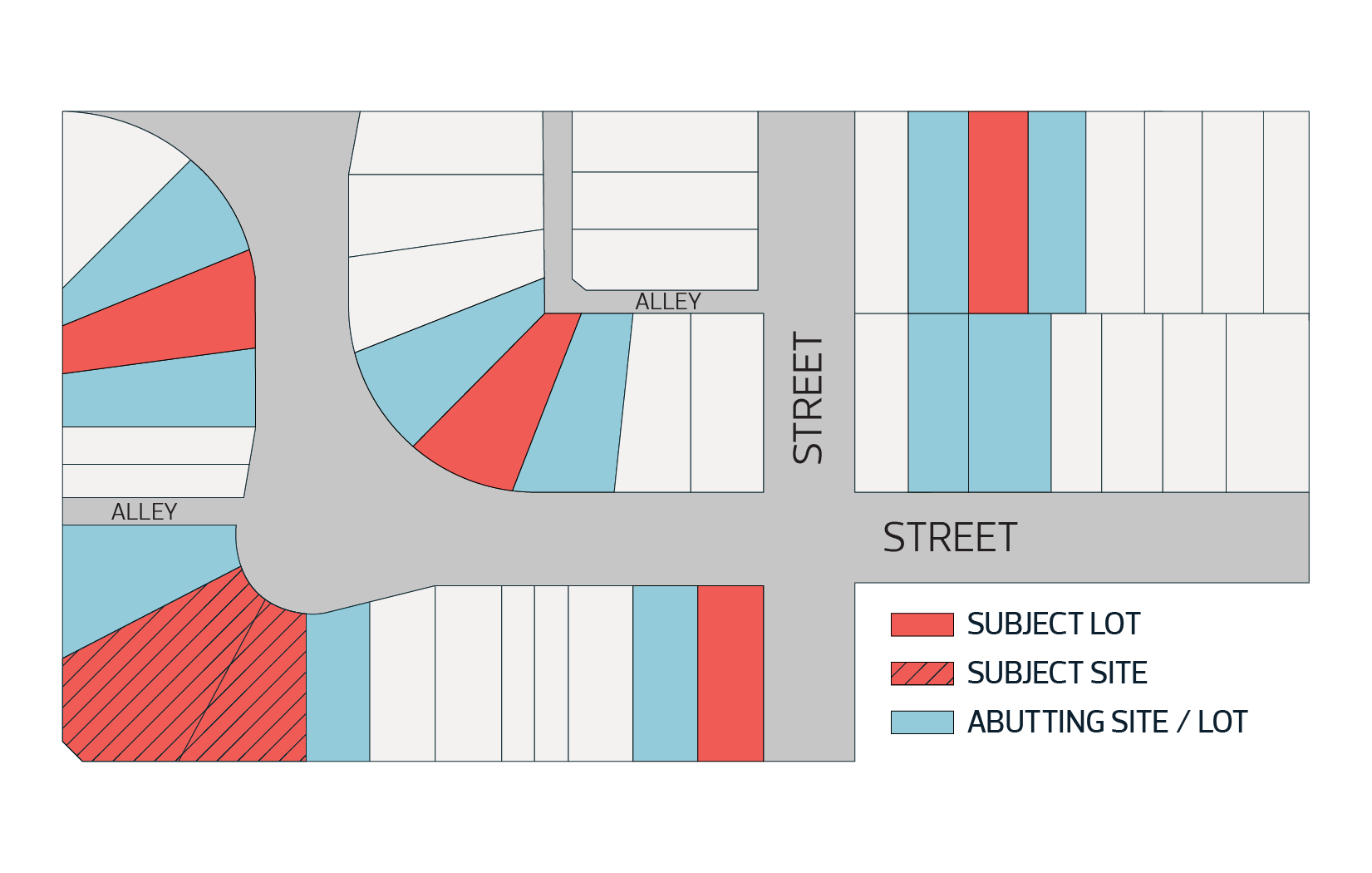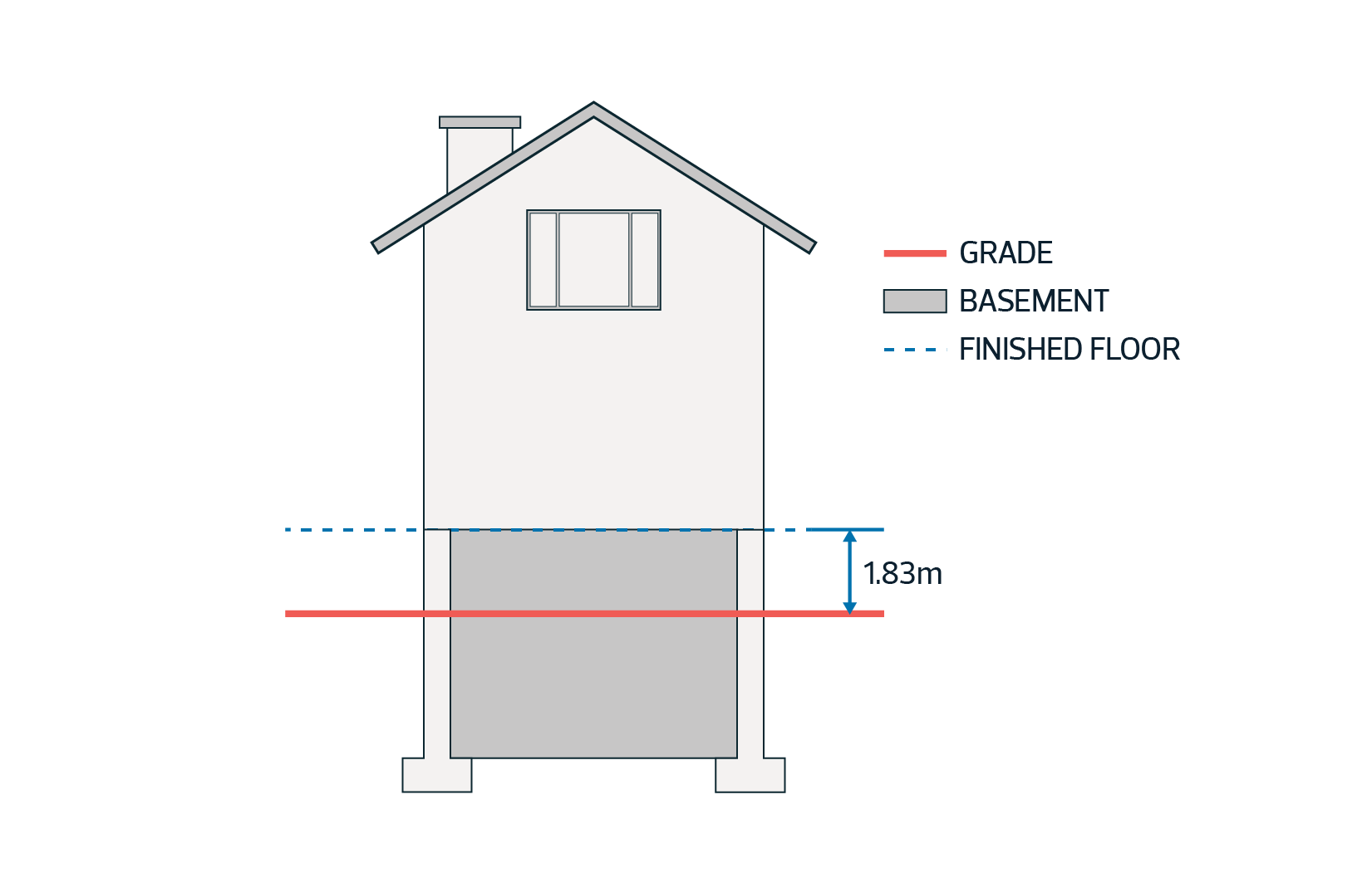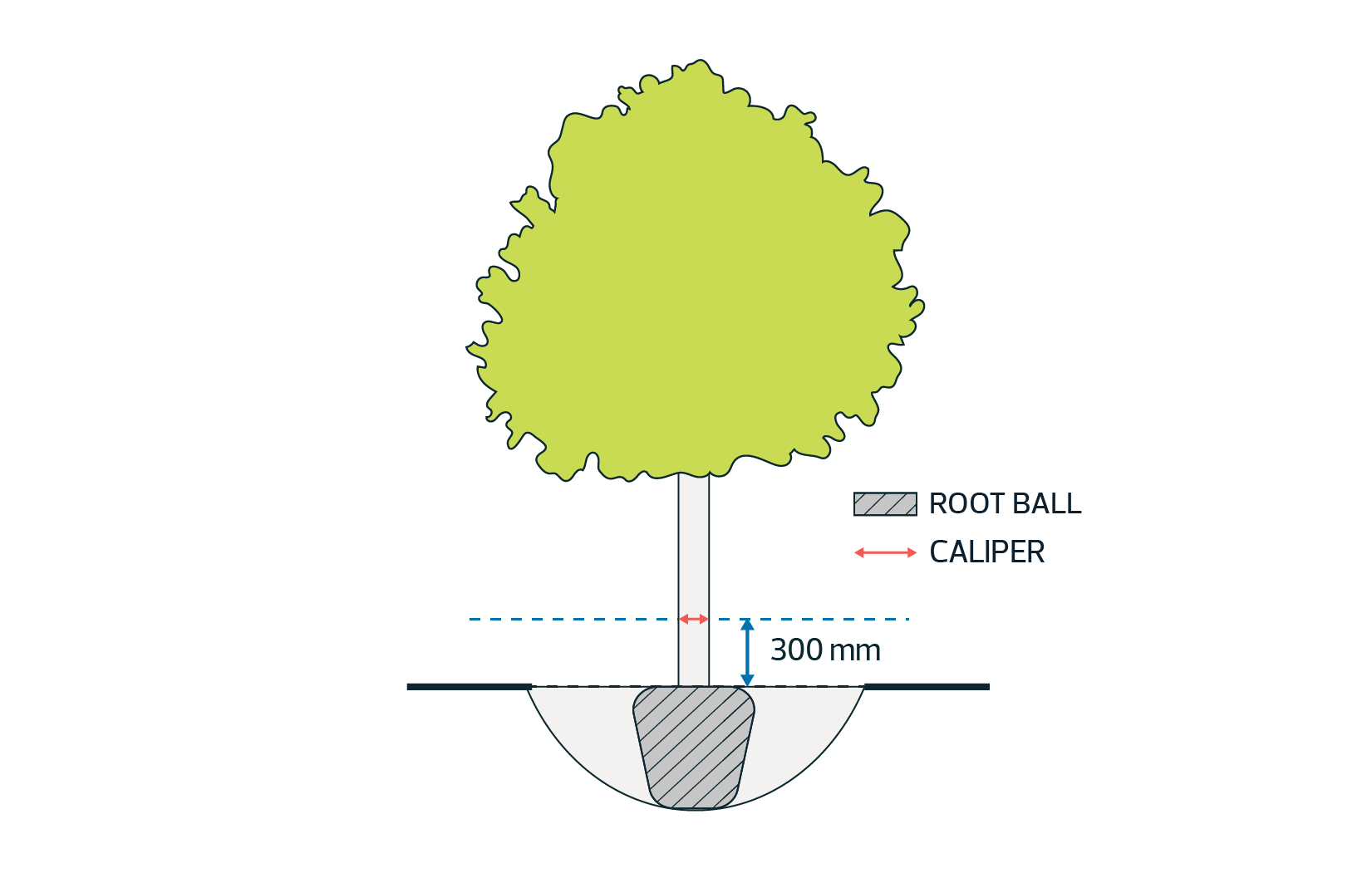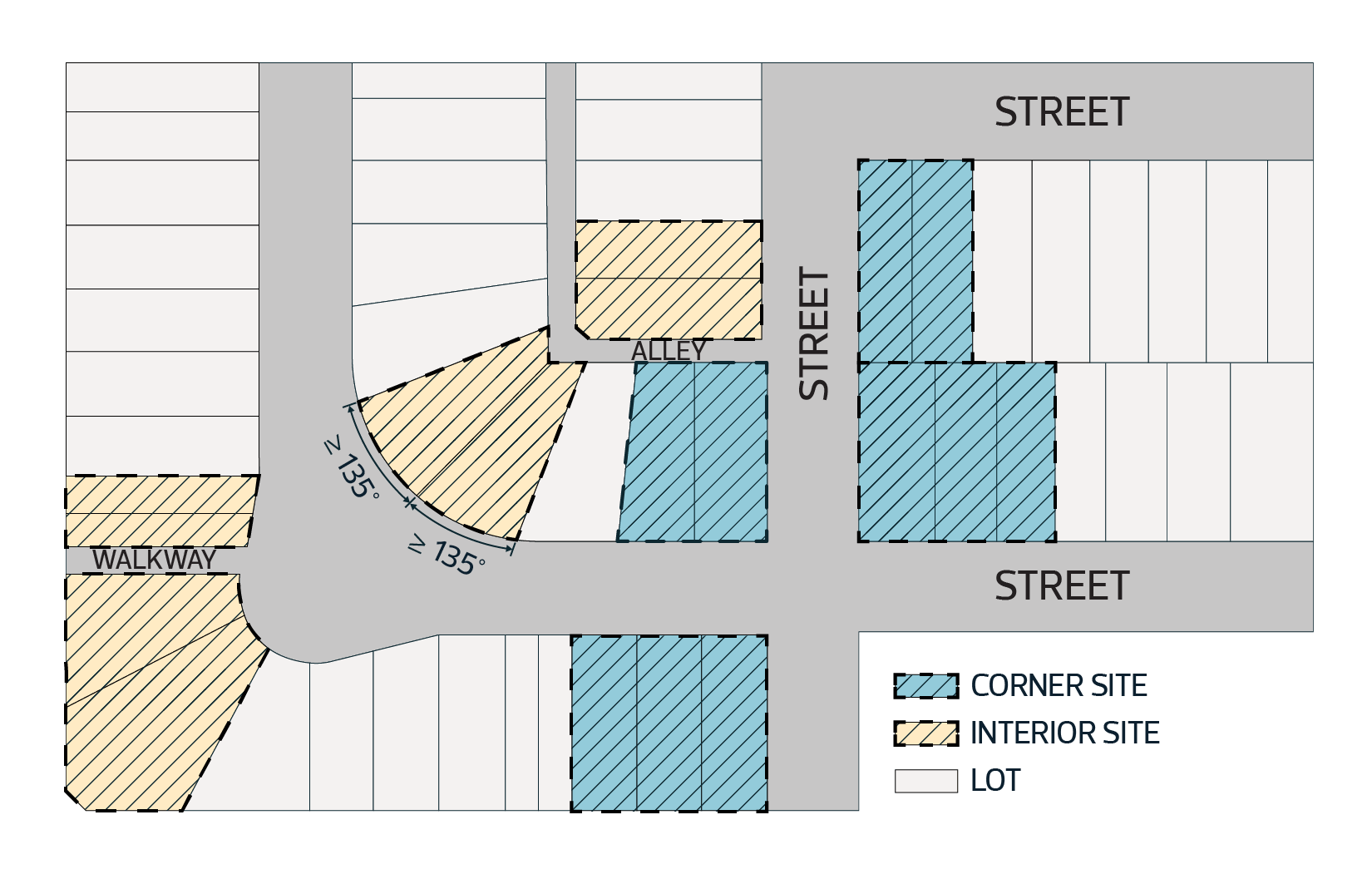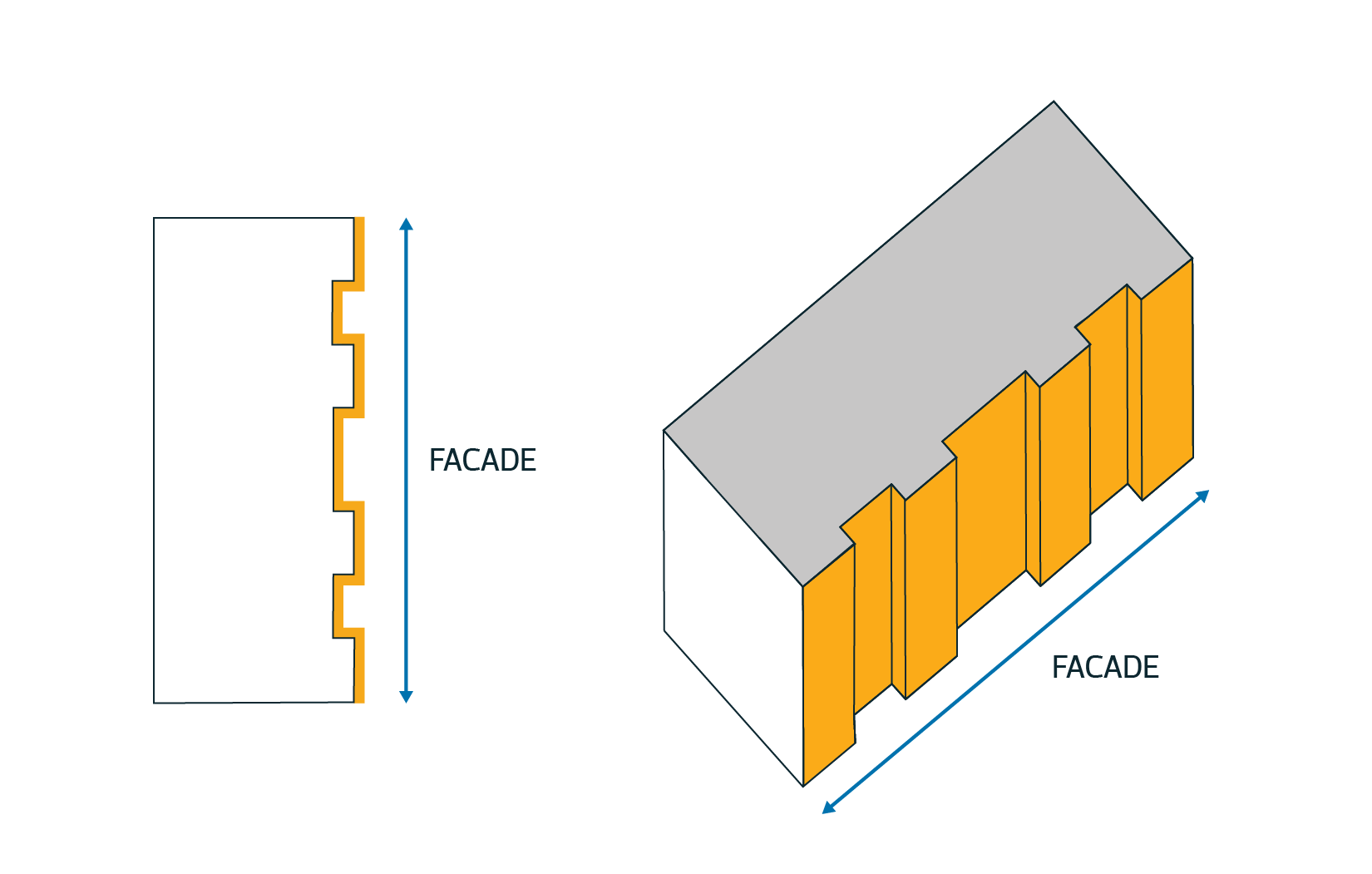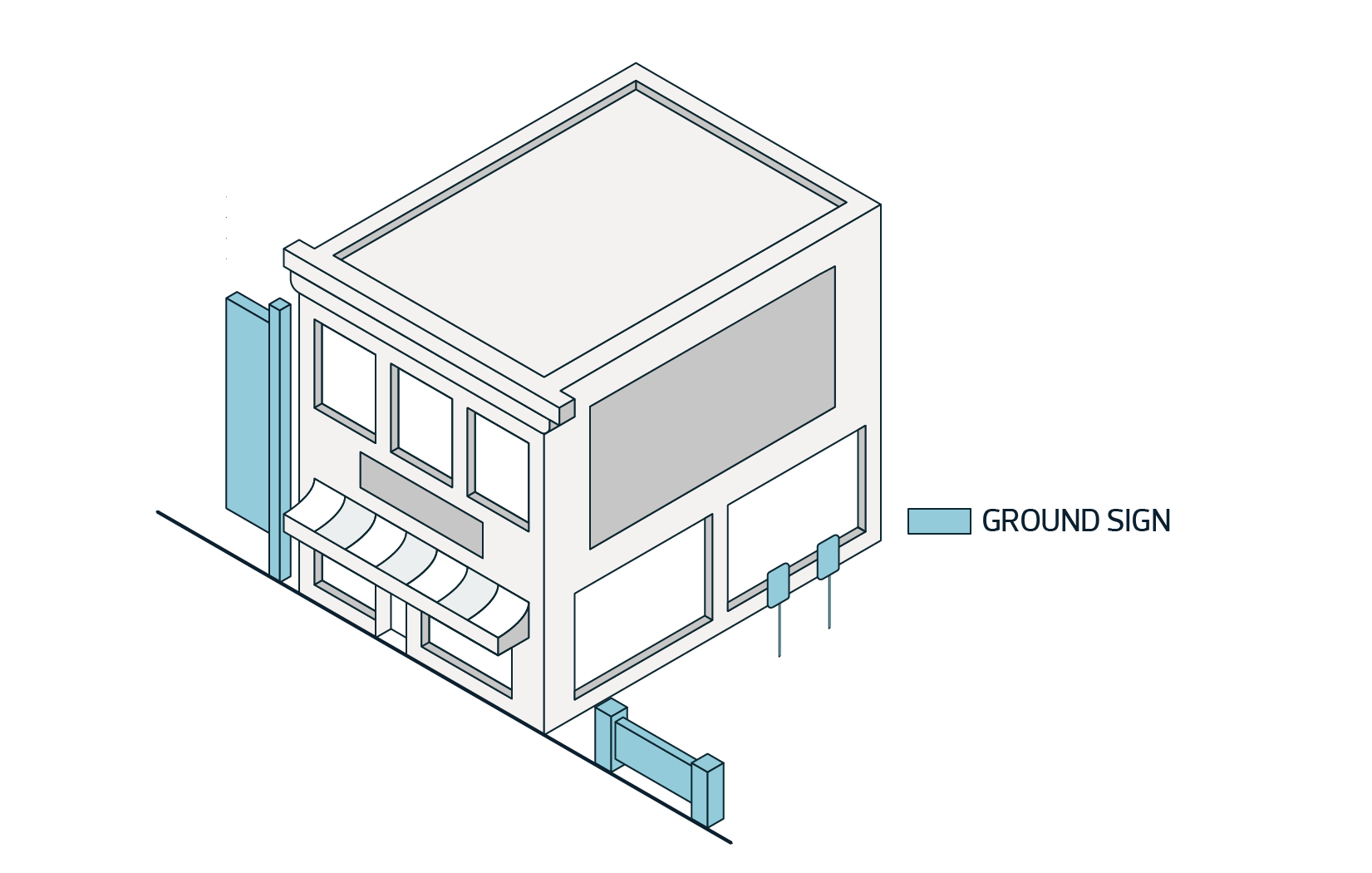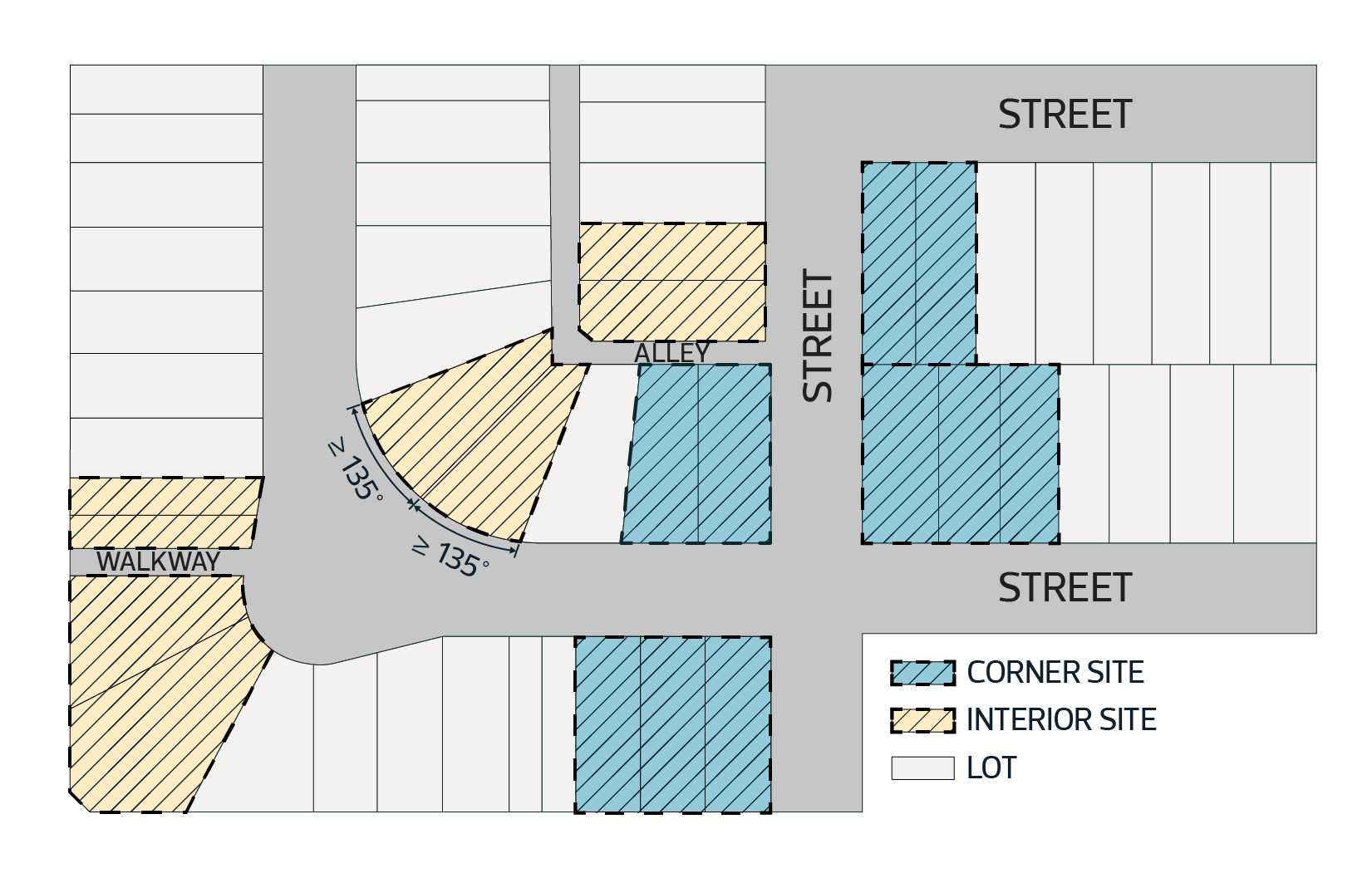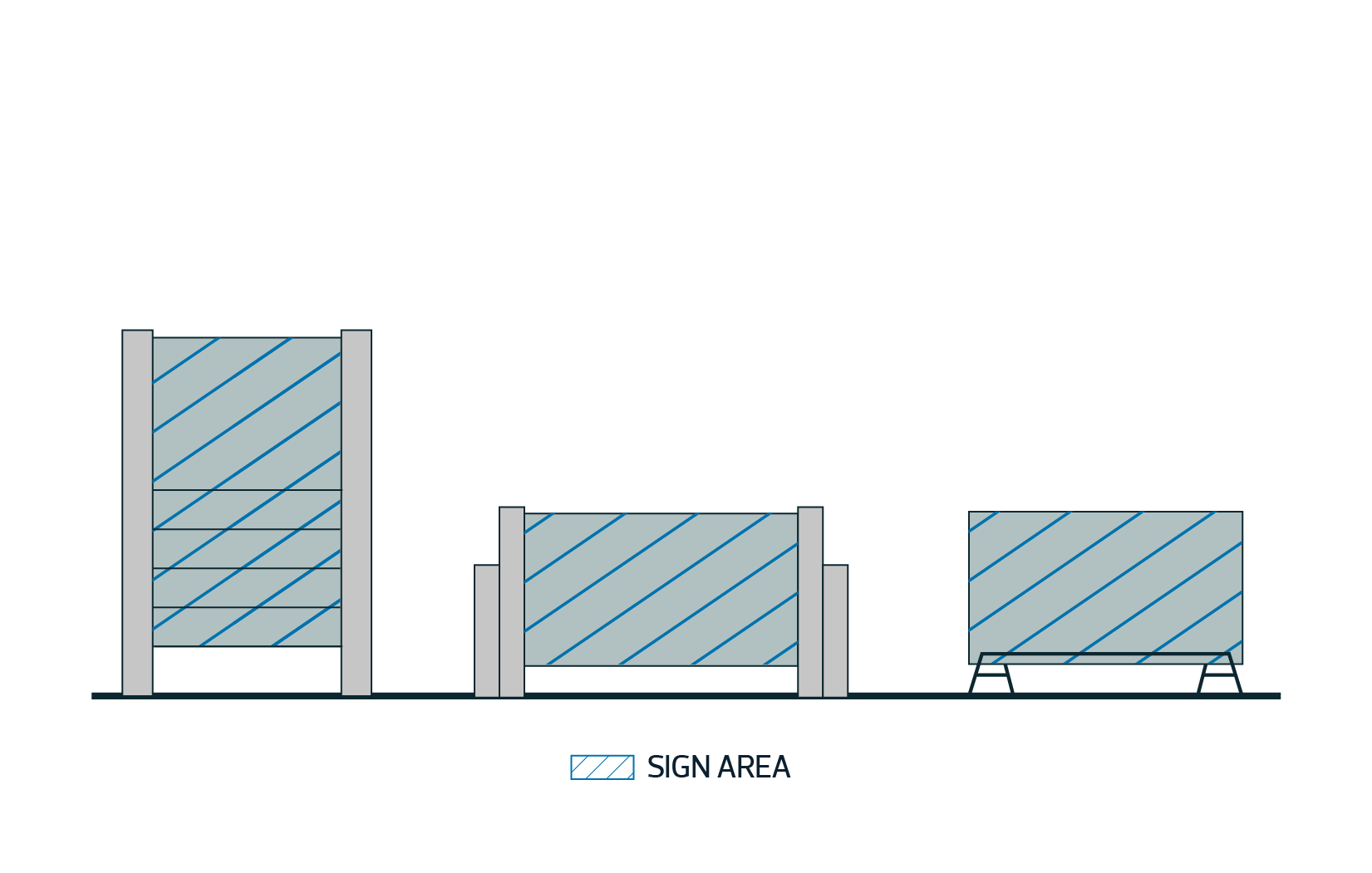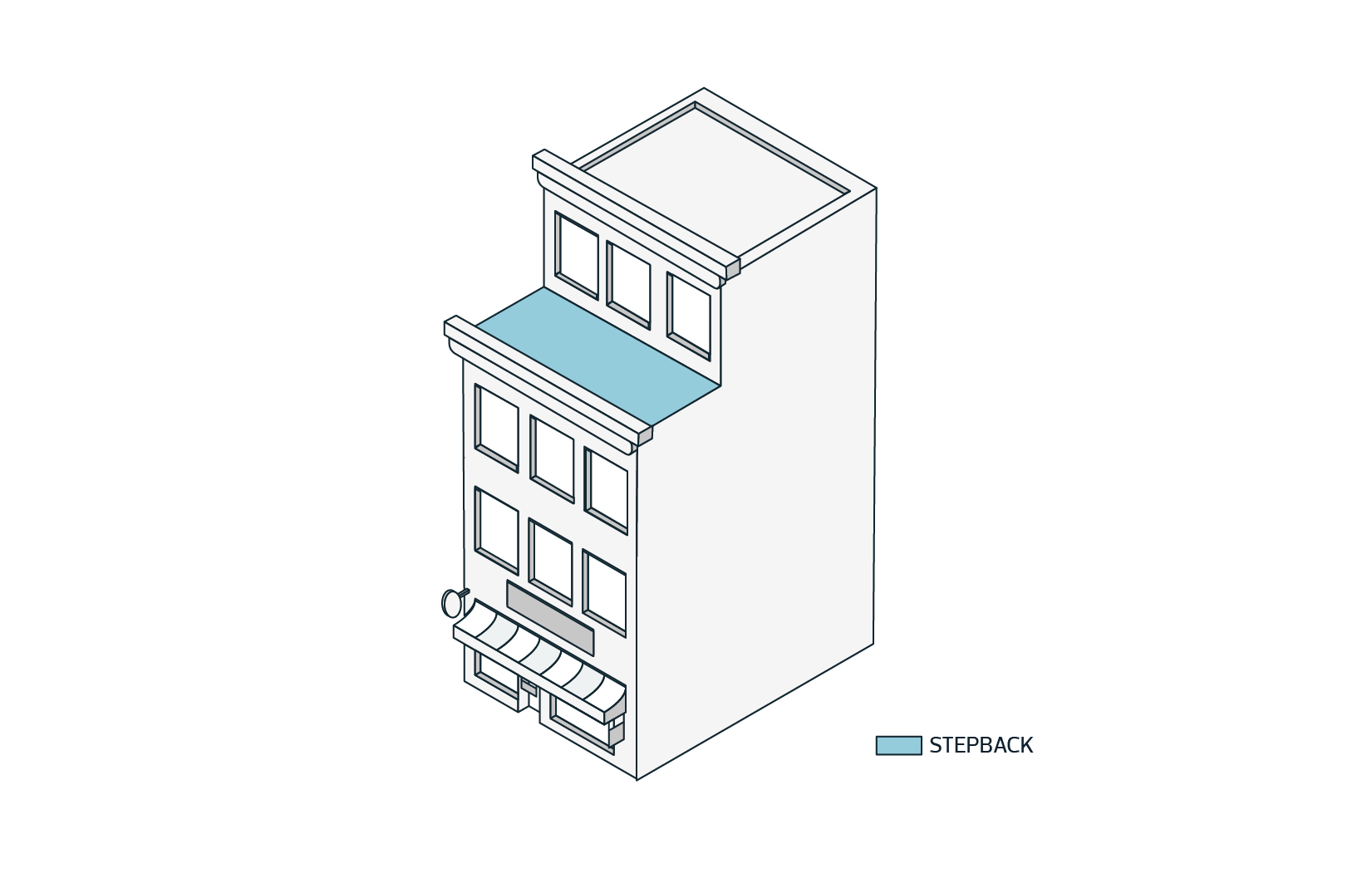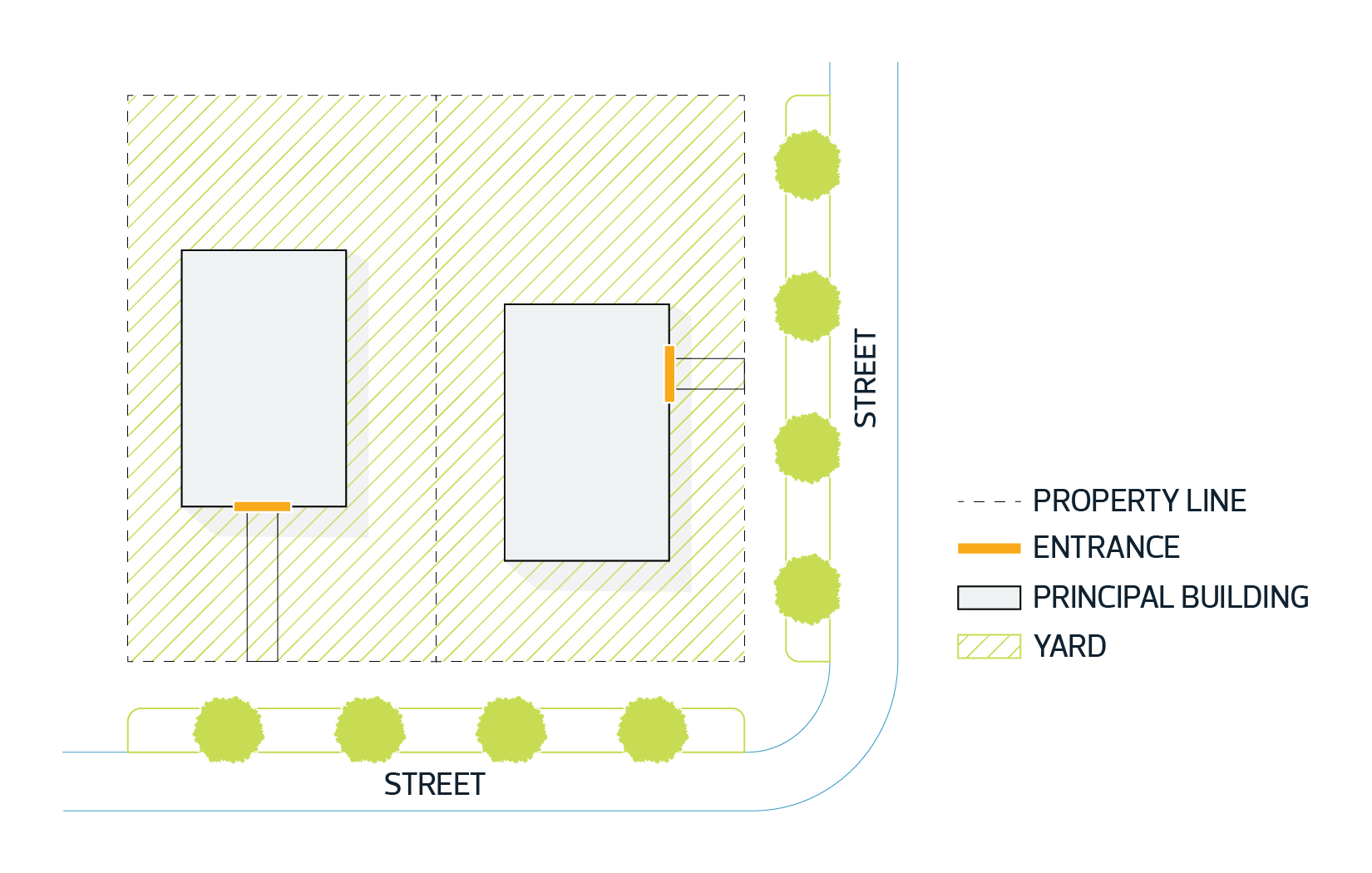8.10 Use Definitions
Residential Uses
Home Based Business means a development where a business is operated primarily inside a Dwelling or an Accessory building by a resident of that Dwelling. A Residential Use is the primary development on the Site and the business activity is secondary. This Use includes Home Based Child Care. This Use does not include activities similar to those offered as Bars, Body Rub Centres, Cannabis Retail Stores, Liquor Stores, or nightclubs.
Residential means a development where a building or part of a building is designed for people to live in. The building contains 1 or more Dwellings or 1 or more Sleeping Units.
This includes: Backyard Housing, Duplex Housing, Lodging Houses, Multi-unit Housing, Row Housing, Secondary Suites, Semi-detached Housing, Single Detached Housing, and Supportive Housing.
Commercial Uses
Bar means a development where the primary purpose is to sell alcoholic drinks for on-Site consumption. Food and non-alcoholic drinks may also be offered at these locations. Minors are prohibited from visiting the bar during at least some portion of the hours of operation. Public Space is primarily used for tables and seating, and less than 10% of the total Floor Area is used for entertainment areas for dancing, stages and other activities.
Typical examples include: pubs, bars, and cocktail lounges.
Body Rub Centre means a development where a business provides the physical external manipulation of the soft tissues of the human body in an adult or erotic nature.
Cannabis Lounge means a development that allows Cannabis to be purchased and consumed on-Site by the public in a location permitted by Provincial or Federal legislation.
Cannabis Retail Store means a development where a business sells Cannabis to be consumed off-Site as permitted by Provincial or Federal legislation. This may include sales of Cannabis accessories. This Use does not include Cannabis Production and Distribution.
Centre City Temporary Parking means a temporary Surface Parking Lot that does not have another principal Use on the Site other than Signs and that was operating as a Surface Parking Lot as of January 1, 2024.
Custom Manufacturing means a development that manufactures or creates custom products that may be sold to customers or commercial businesses in an indoor or outdoor Public Space. Products may be consumed on-Site where associated with food and beverage production activities. These activities may create minimal Nuisance. This Use does not include Cannabis Production and Distribution.
Typical examples include: commercial kitchens, makerspaces, microbreweries, small-scale electronic manufacturing or assembly, small-scale manufacturing, and wineries and distilleries.
Food and Drink Service means a development where the primary purpose is to sell prepared food and drinks to the public for consumption on or off-Site. This Use does not include Grocery Stores.
Typical examples include: cafes, juice bars, and restaurants.
Health Service means a development that provides physical or mental health services on an out-patient basis. Services may be of a preventive, diagnostic, treatment, therapeutic, rehabilitative, or counseling nature.
Typical activities include: medical and dental offices, health clinics and counseling services.
Hotel means a development where the primary function is to provide guest rooms or suites on a temporary basis for sleeping accommodation. Hotels may include concierge service, cleaning service, meeting rooms, dining services, and other guest services.
Typical examples include: hotels, motels, and inns.
Indoor Sales and Service means a development where a business offers sales and services such as retail, personal service, or commercial school activities inside a building.
Typical examples include: animal clinics, art studios, commercial schools, hair salons, indoor markets, pharmacies, retail stores, tailor shops, and tattoo parlours.
Liquor Store means a development where the primary purpose is to sell alcoholic drinks and other related products for off-Site consumption.
Major Indoor Entertainment means a development where indoor facilities are used for entertainment, recreation, conferences, or other purposes. This may also include places where works or objects of historical, scientific, or artistic value are collected, preserved, and exhibited. This activity is typically a regional or city attraction or is likely to have major off-Site impacts or create a Nuisance.
Typical examples include: auditoriums, aquariums, arenas, casinos, concert halls, convention centres, indoor amusement parks, indoor botanical gardens, museums, nightclubs, planetariums, and sports or entertainment complexes.
Minor Indoor Entertainment means a development where indoor facilities are used for entertainment or active recreation. This activity is typically a local or district attraction, is likely to have minimal off-Site impacts, and may create minimal Nuisance.
Typical examples include: arcades, bingo halls, board game cafes, bowling alleys, climbing facilities, fitness facilities, gyms, gymnastic facilities, indoor playgrounds, trampoline parks.
Office means a development where the main activity is to provide professional, management, administrative, consulting, or financial services.
Typical examples include: offices for accountants, architects, financial institutions, employment or call centres, and real estate, law, and insurance firms.
Outdoor Entertainment means a development where people gather outdoors for entertainment purposes that typically require large spaces. Supporting activities may include merchandise, food, or drink sales. These activities may create a Nuisance.
Typical examples include: amphitheatres, drive-in movie theatres, go-kart tracks, outdoor mini-golf courses, outdoor amusement parks, racing tracks, and zoos.
Outdoor Sales and Service means a development where sales and service activities take place primarily outdoors. This may include outdoor storage or display. These activities may create minor Nuisances.
Typical examples include: automotive and minor recreation vehicle (with a gross vehicle weight rating (GVWR) of less than 4600 kg) sales and rentals, and plant nurseries.
Parking Facility means a development where vehicle parking is located on a Site that has any principal Use other than Standalone Parking Facilities.
Typical examples include: Surface Parking Lots and Parkades on a Site with any principal Use.
Residential Sales Centre means a development where permanent or temporary buildings or structures are used for a limited period of time for the purpose of marketing residential land or buildings.
Standalone Parking Facility means a development consisting of vehicle parking, which does not have another principal Use on the Site other than Signs. This can be on the ground or within a structure.
Typical examples include: Parkades and Surface Parking Lots.
Vehicle Support Service means a development where the primary activity is vehicle servicing operations for the repair, maintenance, or fuelling of automobiles and other vehicles with a gross vehicle weight rating (GVWR) of less than 4,600 kg.
Typical examples include: fuel stations, car washes, and vehicle repair shops, such as transmission, muffler, tire, automotive glass, and upholstery shops. This Use does not include auto body repair and paint shops.
Industrial Uses
Crematorium means a development where the buildings or structures are used to cremate human or pet remains.
Indoor Self Storage means a development where personal items and goods are stored in buildings with separate compartments and each compartment has its own access.
Major Industrial means a development used primarily for 1 or more of the following activities:
- processing raw materials;
- manufacturing, cleaning, servicing, repairing or testing materials, goods and equipment;
- handling, storing, or shipping equipment, goods, and materials;
- training, research and development laboratories; or
- distributing and selling materials, goods and equipment to institutions and industrial and commercial businesses.
A Major Industrial Use includes at least 1 of the following features:
- the creation of Nuisances that extend beyond the boundaries of the Site and that may have a harmful effect on other Sites due to noise, odour, light, airborne emissions, dust, heavy commercial vehicle traffic, or any other harmful effect created by a Nuisance; or
- the use of materials or processing operations that require separation from other developments, due to risk of toxic emissions or fire and explosion hazards.
Typical examples include: chemical plants, land treatment facilities, metal factories, and petroleum refineries.
Minor Industrial means a development used primarily for 1 or more of the following activities:
- processing raw materials;
- manufacturing, cleaning, servicing, repairing or testing materials, goods and equipment;
- handling, storing, or shipping equipment, goods, and materials;
- training, research and development laboratories; or
- distributing and selling materials, goods and equipment to institutions and industrial and commercial businesses.
Any resulting Nuisance is less impactful than those permitted under the Major Industrial Use.
Typical examples include: auto body repair and paint shops, Cannabis Production and Distribution, commercial recycling depots, contractor and construction services, equipment or vehicle repair and storage facilities, laboratories, landscaping centres, limo service, materials storage, research facilities, taxi service, truck yard, vehicle (truck, aircraft, mobile homes, etc.) and equipment sales and rentals, and warehouses.
Natural Resource Development means a development used primarily for the removal, extraction, and primary processing of natural resources. This Use does not include the processing of raw materials transported to the Site.
Typical examples include: clay pits, coal mining, gravel pits, oil and gas wells, sandpits, and stripping of topsoil.
Community Uses
Child Care Service means a development that provides temporary care and supervision of children. This Use includes facility-based early learning and child care programs. This Use does not include a Home Based Business operating as Home Based Child Care.
Typical examples include: daycares, out-of-school care, and preschools.
Community Service means a development used for institutional, cultural, recreational, religious, spiritual, social, arts, and educational activities that provide a service to the public and may involve people gathering at peak times and creating intermittent impacts such as noise and traffic. This Use does not include Child Care Services, Libraries, or Schools.
Typical examples include: community halls, community league buildings, community recreation centres, Religious Assemblies, Seasonal Shelters, and Year-round Shelters.
Library means a development where municipal spaces or buildings have a collection of books, art, music, video, programs, or other reference and creative materials available for people to use or borrow.
Outdoor Recreation Service means a development that typically requires large open spaces for active recreation purposes.
Typical examples include: golf courses, ski hills, and sports fields that may require paid entry or have restricted access.
Park means a development where land is publicly accessible and used for active or passive recreation. These may include facilities, playing fields, buildings and other structures that serve a recreational purpose of the park.
Typical examples include: open green space, pedestrian trails and paths, picnic grounds, plazas, sports fields, and associated structures such as band shells, ice rinks, outdoor pools, playgrounds, and spray parks.
Protected Natural Area means an area identified for the conservation, preservation and/or restoration of natural features, biodiversity, and ecological processes. This Use does not include Parks.
Typical examples include: forests, grasslands, landscape buffers and trails for appropriate passive recreation activities, rare species habitats, wetlands and other water bodies, and woodlands.
School means a development that has rooms to educate, train, or instruct children or adults. It may include administrative offices, food services, or other related facilities. This Use does not include private facilities used for training and instruction in a specific trade, skill, service or artistic endeavour such as a commercial school.
Typical examples include: charter schools, community colleges, polytechnics, public and private elementary and secondary schools, universities, and their administrative offices.
Special Event means a development where temporary activities occur in an indoor or outdoor space for a limited amount of time.
Typical examples include: carnivals, circuses, festivals, markets, and pop-up events.
Basic Service Uses
Cemetery means a development where land is used primarily as landscaped open space for burying the deceased, and may include columbariums, mausoleums, and buildings used for funeral services.
Detention Facility means a development with large scale institutional activities that provide regional correctional services.
Typical examples include: corrections facilities, jails, prisons, and remand centres.
Emergency Service means a development which is required to protect the public and property from injury, harm or damage. It may include incidental training facilities and equipment and vehicle storage.
Typical examples include: ambulance services, fire stations, police stations, and associated training facilities.
Essential Utility means a development that provides infrastructure which forms a necessary part of a principal utility.
Typical examples include: electrical power transformers, pumping stations, regulating stations, stormwater management facilities, and underground water reservoirs.
Health Care Facility means a development where institutional facilities provide health services, medical treatment, and accommodations for people requiring care, and may include out-patient services and staff residences.
Typical examples include auxiliary hospitals, continuing care facilities, convalescent homes, detoxification centres, and hospitals.
Major Utility means a development that provides utility infrastructure which is likely to create major Nuisances such as emissions, odour, light, or noise.
Typical examples include: compost facilities, cooling plants, garbage transfer and compacting stations, incinerators, power generating stations, sanitary landfills, sewage lagoons, sewage treatment plants, sludge disposal beds, and waste recycling plants.
Minor Utility means a development that provides utility infrastructure which is likely to create minimal or no Nuisance.
Typical examples include: communication towers, district heating plants, eco stations, gate stations for natural gas distribution, power terminals and distributing substations, snow dumping sites, switching centres, telecommunications centres, transit storage and maintenance facilities, transit vehicle depots, traction power substations, utility storage yards, water towers, water treatment plants, and wire centres.
Recycling Drop-off Centre means a development where municipally operated spaces are used for the collection and temporary storage of recyclable materials within movable waste containers. Recyclable materials include, but are not limited to, cardboard, plastics, paper, metal and similar household items. Recyclable materials left at the Recycling Drop-off Centre are periodically removed and taken to larger, permanent recycling facilities for final recycling.
This Use does not include bottle depots or eco stations.
Transit Facility means a development that provides publicly or privately operated transit services. This Use does not include vehicle storage and maintenance facilities.
Typical examples include: bus stops, cable transport stations, Mass Transit Stations (including LRT stops and stations), regional bus and train stations, transit centres, and transit plazas.
Agricultural Uses
Agriculture means farm activity associated with raising animals and production of dairy products, or growing crops, including grains, vegetables and fruits and other plants for economic gain as food, landscaping, fibre, or fuel within a rural context. This may include the sale of agricultural products raised or grown on-Site and related accessory products. This Use also allows for large-scale topsoil removal and grading. This Use does not include confined feeding operations as defined by the Agricultural Operations Practices Act, or Cannabis Production and Distribution.
Typical examples include: farms, greenhouses, and small animal breeding facilities.
Urban Agriculture means a development that involves growing fruits, vegetables, plants, or raising chickens or bees in urban areas for use beyond personal consumption. This activity may include the sale of agricultural products raised or grown on-Site. This Use does not include Cannabis Production and Distribution.
Typical examples include: community gardens, Hen Enclosures, hydroponic or aquaponic systems, and vertical farms.
Sign Uses
Fascia Sign means a Wall Sign or a Window Sign that does not contain Digital Copy.
Typical examples include: business identification signs, window signs, billboards, posters, or Mural Signs.
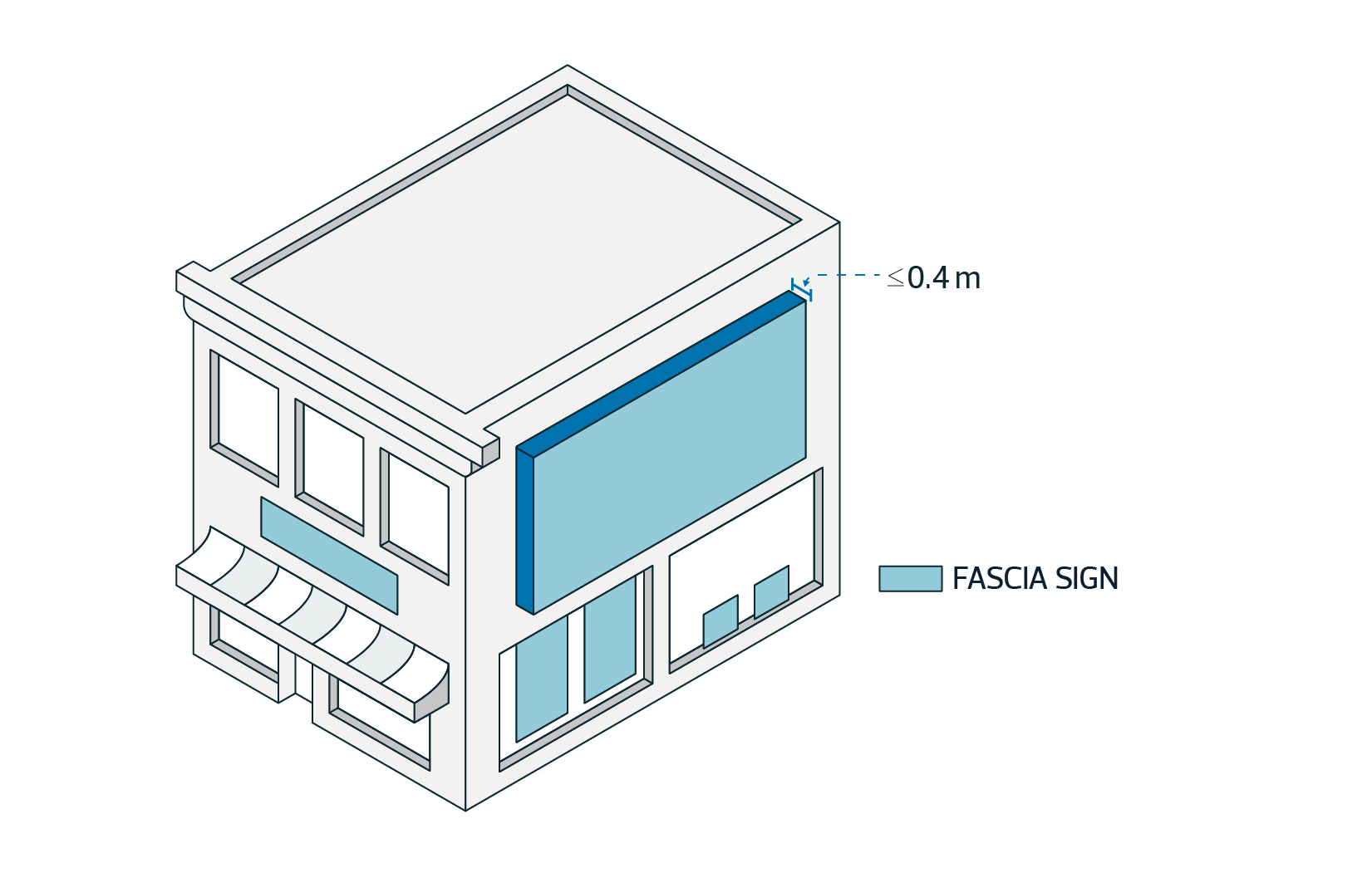
|
Freestanding Sign means a Ground Sign that does not contain Digital Copy.
Typical examples include: pylon signs, monument signs, billboards, posters, and neighbourhood identification signs.
Major Digital Sign means a Ground Sign or Wall Sign, generally used for short-term advertising, that contains Digital Copy and may include static images, moving effects, message transition effects, video images, or animation.
Typical examples include: digital billboards, digital posters, and junior panels.
Minor Digital Sign means a Ground Sign or Wall Sign, generally used for short-term advertising, that contains Digital Copy where the Message Duration is 6 seconds or more, and does not include moving effects, message transition effects, video images, or animation.
Typical examples include: digital billboards, digital posters, and junior panels.
Portable Sign means a Sign that is relocatable or removable from a Site, is used for short-term advertising, and is not anchored below ground level or to any surface.
It does not contain Digital Copy.
Projecting Sign means a Sign that projects:
- more than 0.4 m from a building Facade;
- below or above a canopy, awning, or architectural feature; or
- above the eaveline or roofline.
It does not contain Digital Copy.
Typical examples include: blade, canopy, and roof signs.
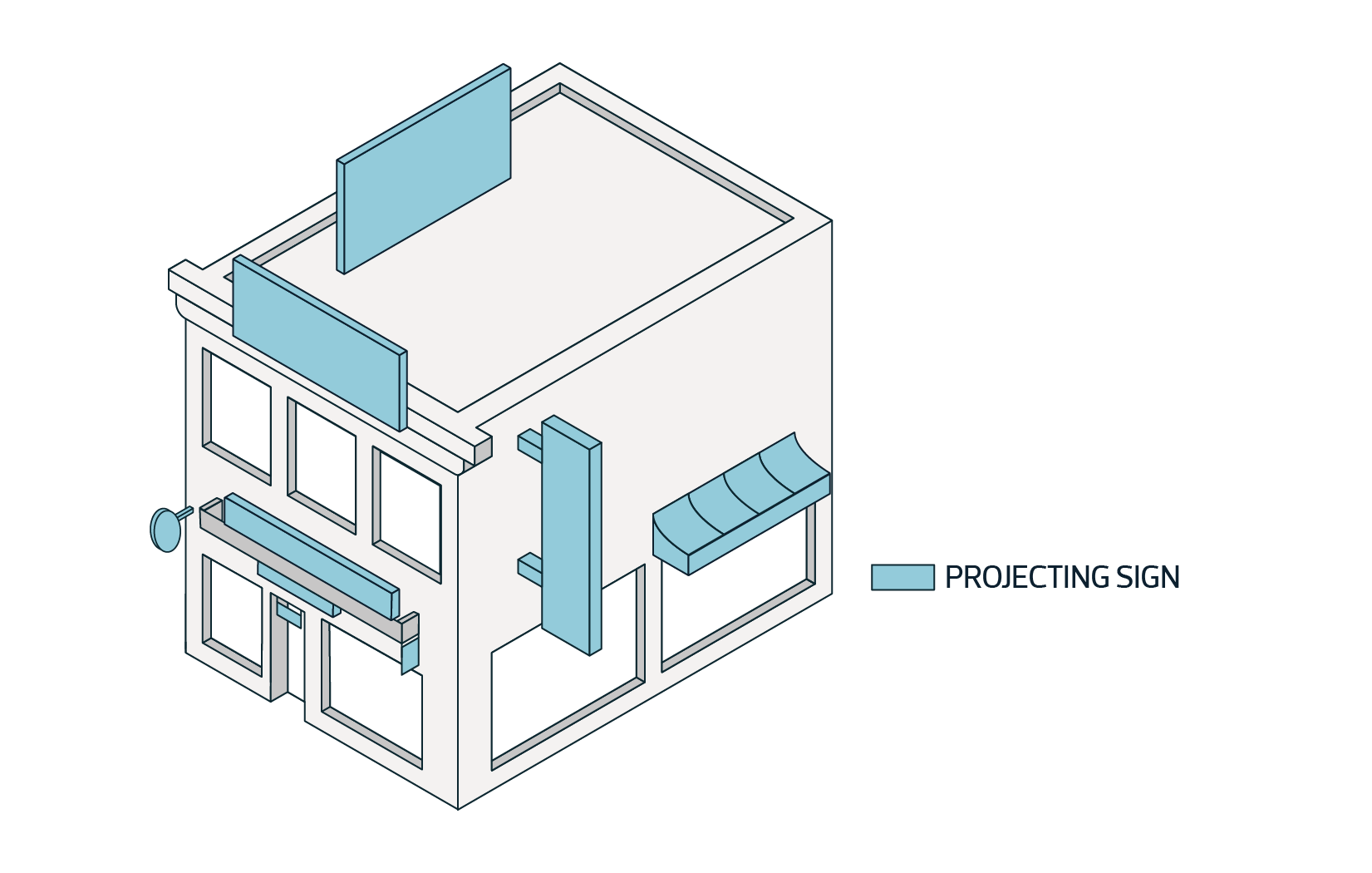
|
8.20 General Definitions
A B C D E F G H I J K L M N O P Q R S T U V W X Y Z
A
Abandoned Sign means a Sign that has fallen into a state of disrepair, or a Sign that is not in a readable state.
Additions to Reserves means the act of adding land to an existing Reserve land base of a First Nation.
Alley means a narrow roadway primarily intended to give access to the rear of buildings and parcels of land.
| Amenity Area means: | |||||||
|
|||||||
| Typical examples include a Common Amenity Area, a Private Outdoor Amenity Area, or a Public Amenity Area. | |||||||
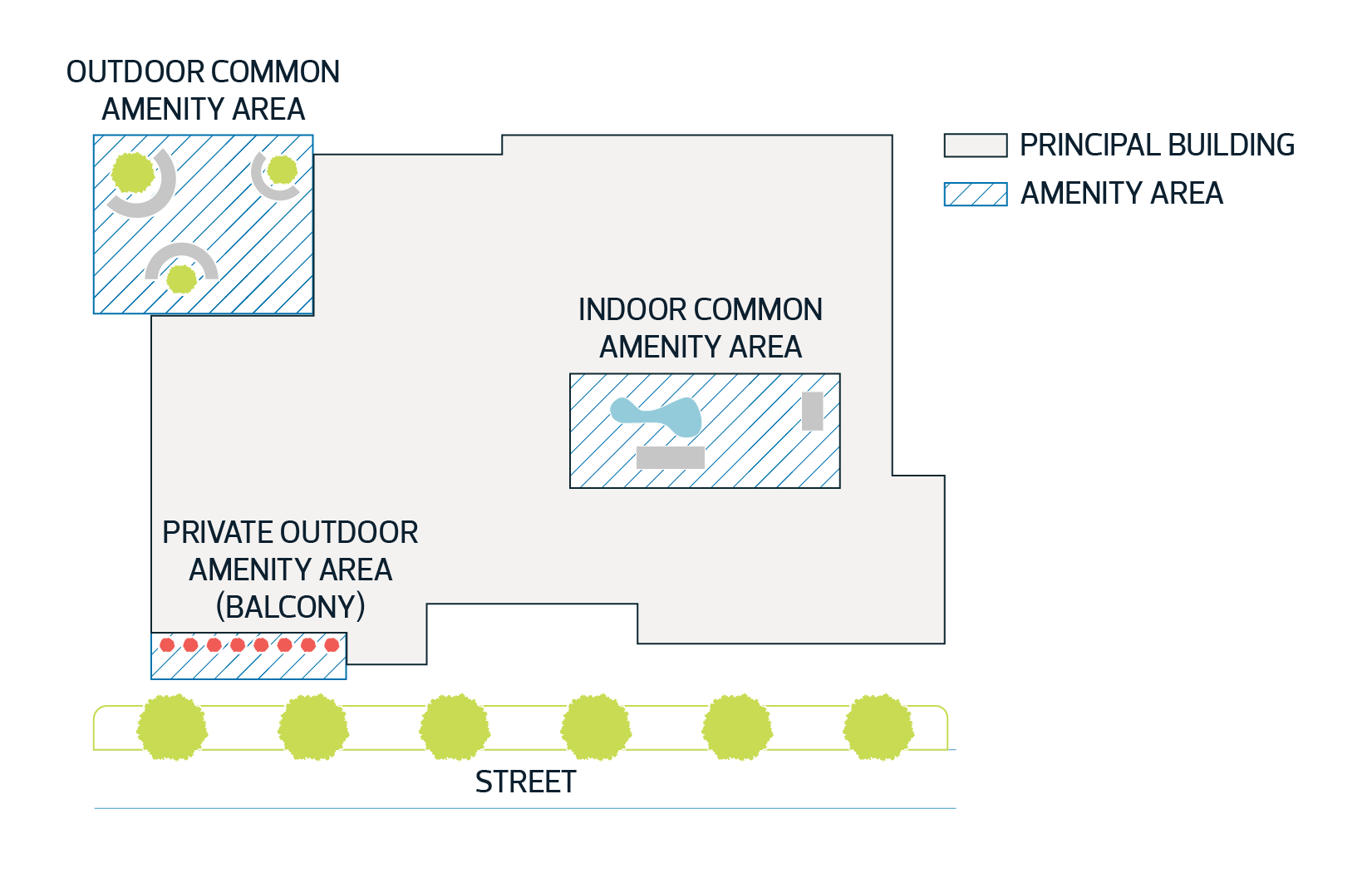
|
Architectural Elements mean building details used to accentuate entrances, windows, storefronts or other prominent building features to create visual interest. Architectural Elements include details such as varying rooflines, mouldings, arches, lintels, columns, cornices, and sills.
Arterial Road means a Street that carries larger volumes of traffic including motor vehicles, public transit, and active transportation modes, travelling between areas, having relatively few and controlled vehicle access points. Arterial Roads are identified in Bylaw 15101, as amended.
B
Backyard Housing means a building containing 1 or more Dwellings, that is located wholly within the Rear Yard, and partially or wholly within the Rear Setback of the applicable Zone, of a Residential Site.
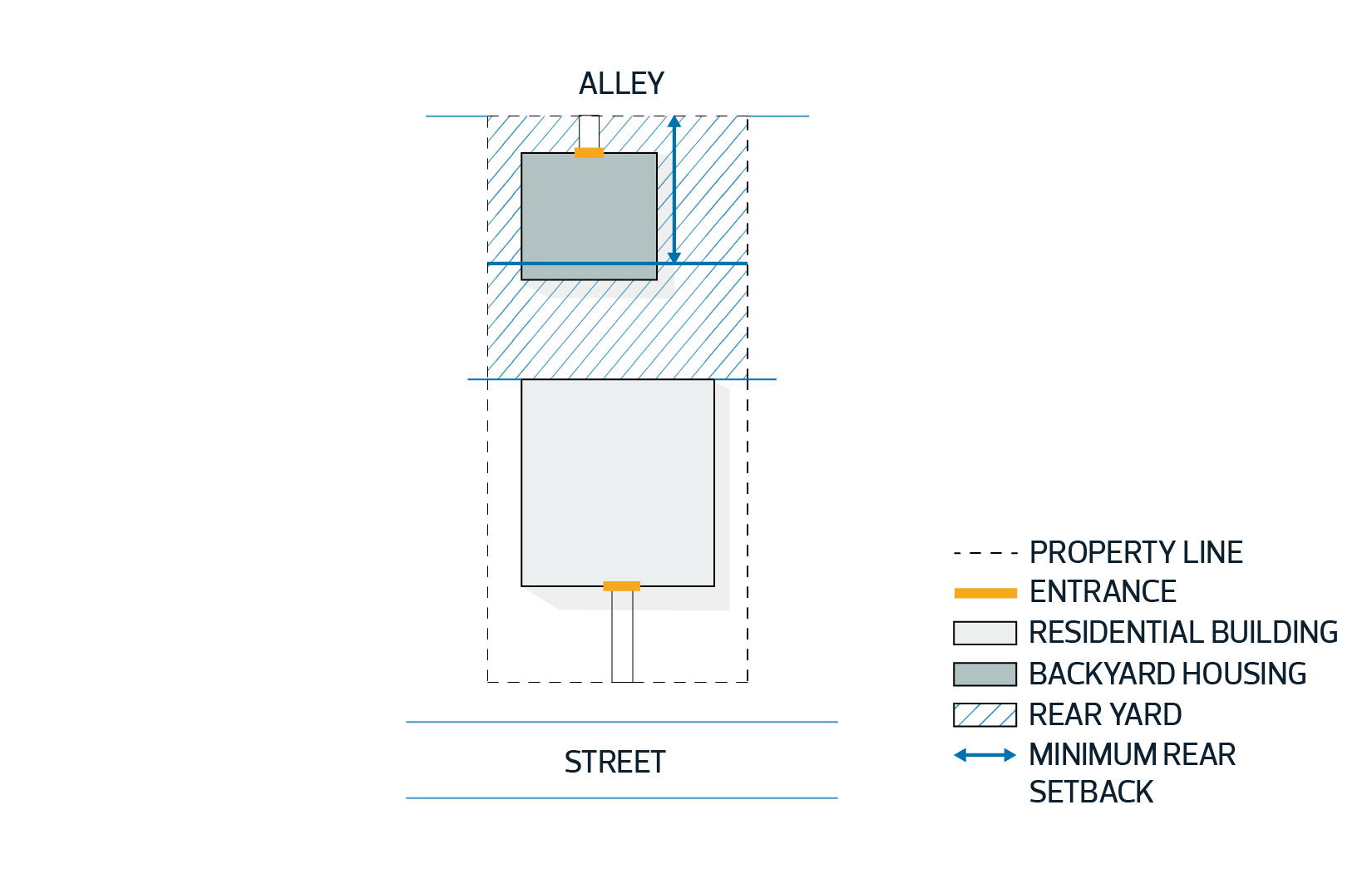
|
Banner Sign means a Temporary Sign that is constructed of non-rigid material capable of being displayed without the use of a flag pole.
Bare Land Condominium means a condominium development containing Bare Land Condominium Units, created specifically through subdivision and registered as a condominium plan in accordance with the Condominium Property Act, R.S.A. 2000, c. C-22.
Bare Land Condominium Unit means a bare land unit as defined in the Condominium Property Act, R.S.A. 2000, c. C-22.
Barrier-free means an absence of obstacles, allowing people with physical, cognitive or sensory impairments safer or easier access to Pathways, open spaces, amenities, facilities, services, activities, or areas within a building.
Typical examples of obstacles include steps, doorways that project into a Barrier-free path and a lack of access between building floors.
Bike Parking Space means a space designed for parking a bike in an orderly and secure manner. A Bike Parking Space can be designed to secure a bike horizontally or vertically and can also be designed as Inclusive Bike Parking.
A Bike Parking Space can be provided as Short Term Bike Parking or Long Term Bike Parking.
Bylaw Enforcement Officer means an individual appointed as a Bylaw Enforcement Officer, pursuant to the Enforcement Bylaw, Bylaw 16368.
C
| Cannabis means a cannabis plant and anything referred to in Subsection (a) of this definition but does not include anything referred to in Subsection (b) of this definition: | |||||||||||||||||||||||
|
|||||||||||||||||||||||
| Cannabis Production and Distribution means a Minor Industrial development that is used mainly for 1 or more of the following Cannabis-related activities: | |||||||||||
|
|||||||||||
Cluster Housing means a housing arrangement consisting of 2 or more principal residential buildings, other than Backyard Housing, on a Site that includes common property, such as communal Parking Areas, private roadways, Pathways, Amenity Areas, or maintenance areas that are shared.
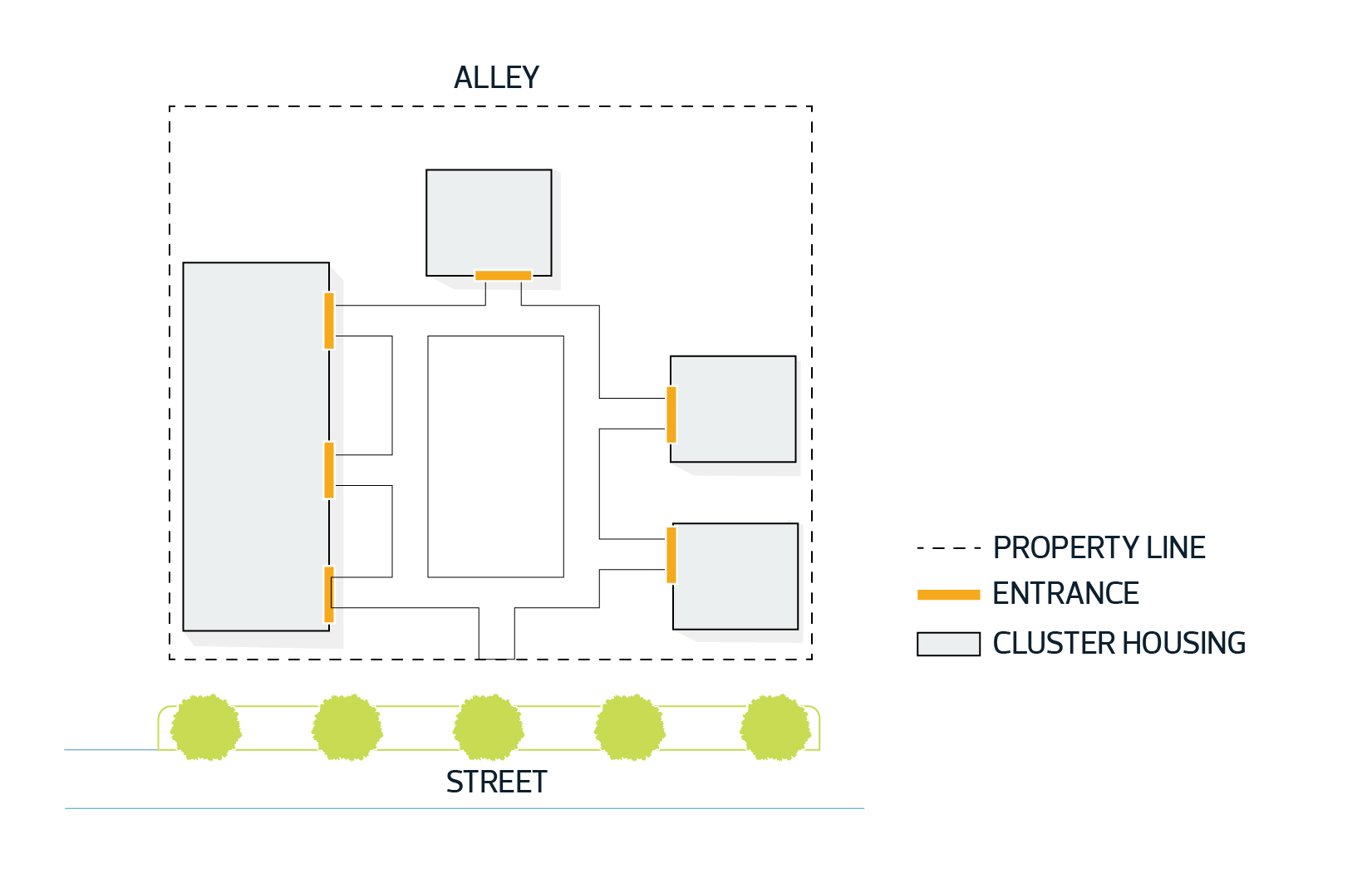
|
Collector Road means a Street that primarily provides neighbourhood travel between Local Roads and Arterial Roads and may also include direct vehicle access to Abutting Sites.
Commercial Frontage means a development that has non-Residential Uses located at ground level and oriented towards the Street.
Where described as a Modifier in a regulation, this is represented with the letters “cf” on the Zoning Map.
Commercial Vehicle means a vehicle that is intended or designed for commercial purposes or is used for commercial purposes.
Common Amenity Area means an Amenity Area that provides communal space for the active or passive recreation and enjoyment of all occupants of a Residential development.
Comprehensive Sign Design Plan means a comprehensive conceptual plan for Signs that specifies the Use, size, type, illumination, Height, design, location, and number of Signs proposed on a building or Site.
A Comprehensive Sign Design Plan does not approve the development of a Sign.
Congregate Sleeping Area means a shared, open space within a Year-round Shelter or Seasonal Shelter where more than 8 people are accommodated overnight. Partitions may be used to provide separation and privacy between individual sleeping spaces. The congregate space may be converted for other
activities during the day.
| Corner Lot means a Lot that is: | |||||
|
|||||

|
D
| Dangerous Goods means products, materials or substances that are: | |||||
|
|||||
| and are produced, processed, handled, stored, used, or disposed of on a Site. | |||||
Density means, when used in reference to Residential development, the number of Dwellings on a Site, expressed as Dwellings per hectare.
Density is calculated by dividing the number of Dwellings on a Site by the Site’s area. For the purposes of calculating Density for Lodging Houses and Supportive Housing, each Sleeping Unit is considered a Dwelling.
Development Permit means a document authorizing a development, issued by the Development Planner pursuant to this Bylaw or any previous Bylaw governing land use within the city of Edmonton, and includes the plans and conditions of approval.
Development Planner means the development authority, pursuant to the City Administration Bylaw, Bylaw 16620.
Directional Sign means a Sign providing direction to pedestrian or vehicle traffic. Typical examples include exit and parking Signs.
Discretionary Development means a development that meets the criteria in Subsection 3.4 of Section 7.110 of this Bylaw.
Discretionary Uses means those Uses of land, buildings or structures for which Development Permits may be issued only at the discretion of the Development Planner.
Dormer means an extension of a room that projects vertically beyond the plane of a sloped roof, typically to allow for a window opening into the room.
Double Fronting Site means a Site that Abuts 2 Streets that are parallel or nearly parallel.

Drive Aisle means the area that provides circulation for vehicles within Parkades or Surface Parking Lots, and does not include a Street, Pathway, or vehicle access.

|
Drive-through Services means an activity associated with a Use that requires 1 or more inbound or outbound queuing spaces, and provides rapid customer service to people within a motor vehicle.
Driveway means an area that provides vehicle access to the Garage or Parking Area of a small scale Residential development from a Street, Alley, or private roadway. A Driveway does not include a Pathway.
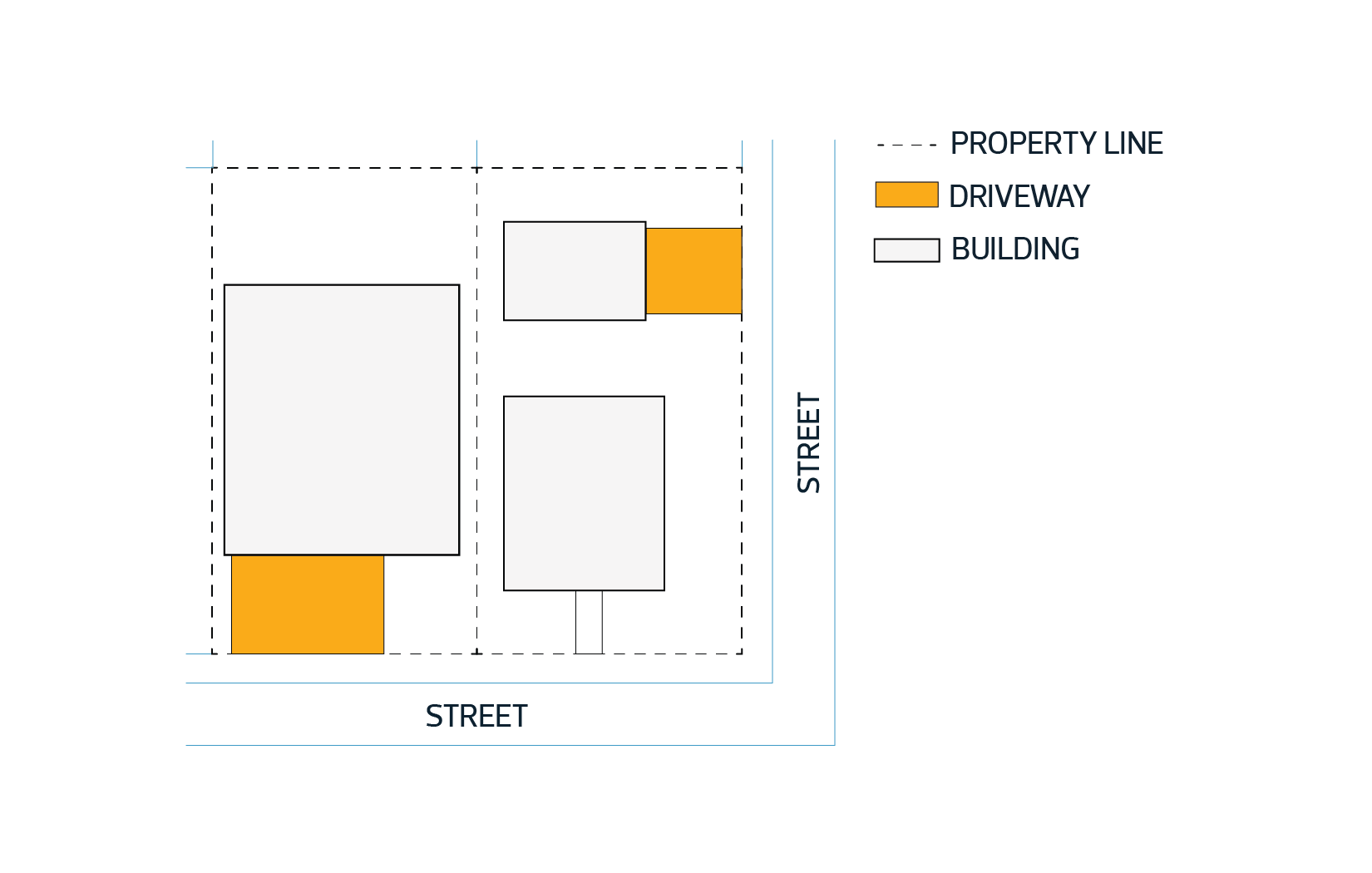
|
Duplex Housing means a building where 1 principal Dwelling is placed over another principal Dwelling, in whole or in part, within a single building. Each principal Dwelling has separate and individual access. This does not include Semi-detached Housing.
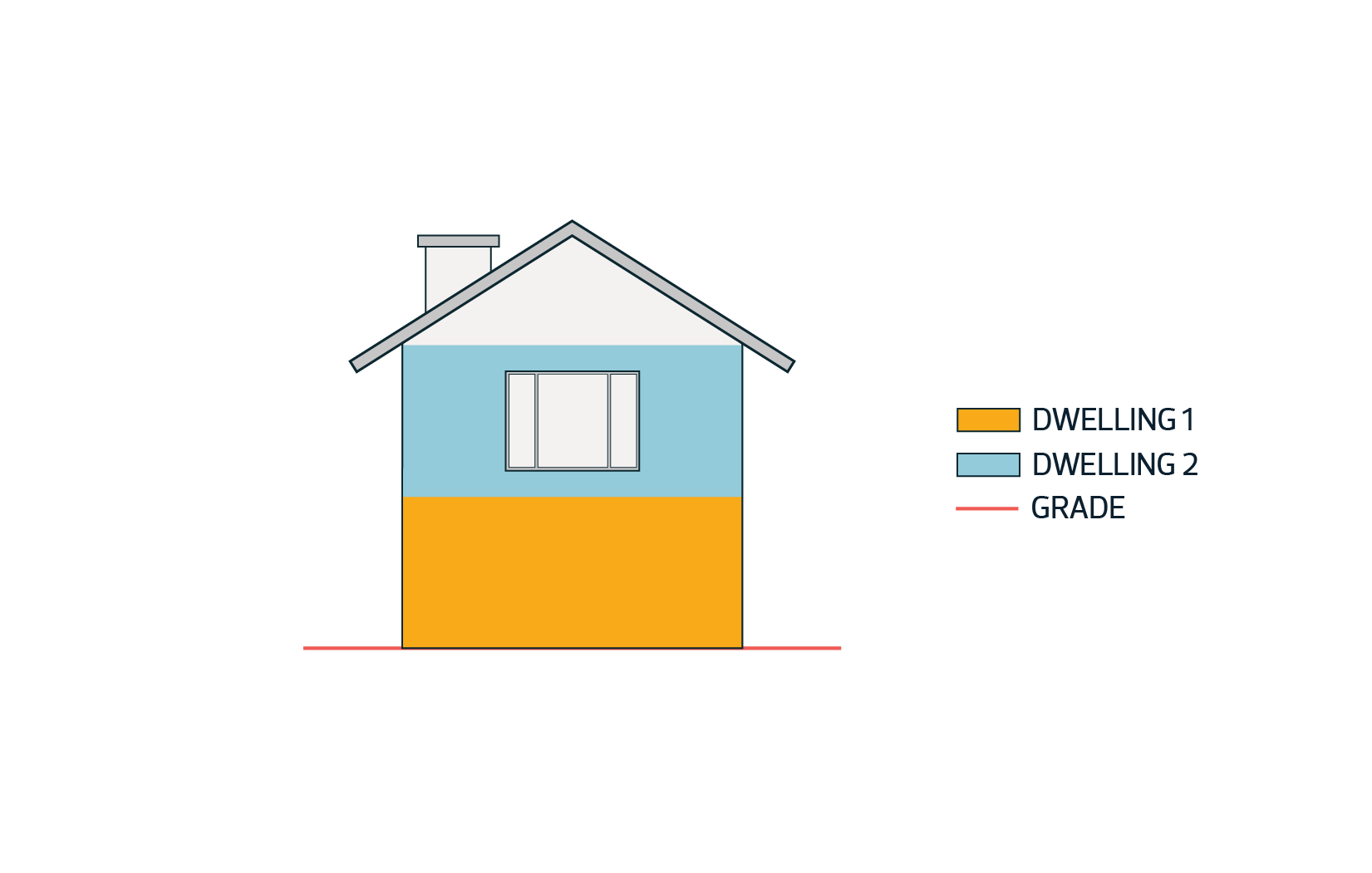
|
E
Environmental Protection and Enhancement Act means the Environmental Protection and Enhancement Act, R.S.A. 2000, c. E-12, as amended.
External Illumination means an external light source directed to illuminate the exterior surface of a Sign.
F
Fence means a structure that is constructed at ground level and used to prevent or restrict passage, mark a boundary, or provide visual screening, noise reduction, or Landscaping. A Fence is not a Privacy Screen.
Flag means a piece of cloth or similar material, typically oblong or square, attachable by one edge to a pole or rope that displays the symbol or emblem of a country, province, territory, municipality, or institution.
Flag Sign means a Ground Sign made of a piece of cloth or similar material typically attached on 1 side to a pole or rope that is used for advertising the symbol, emblem, or Logo of a business. This does not include Flags or Banner Signs.
Flanking Side Lot Line means a Lot line, other than a Front Lot Line, that Abuts a Street on a Corner Site.
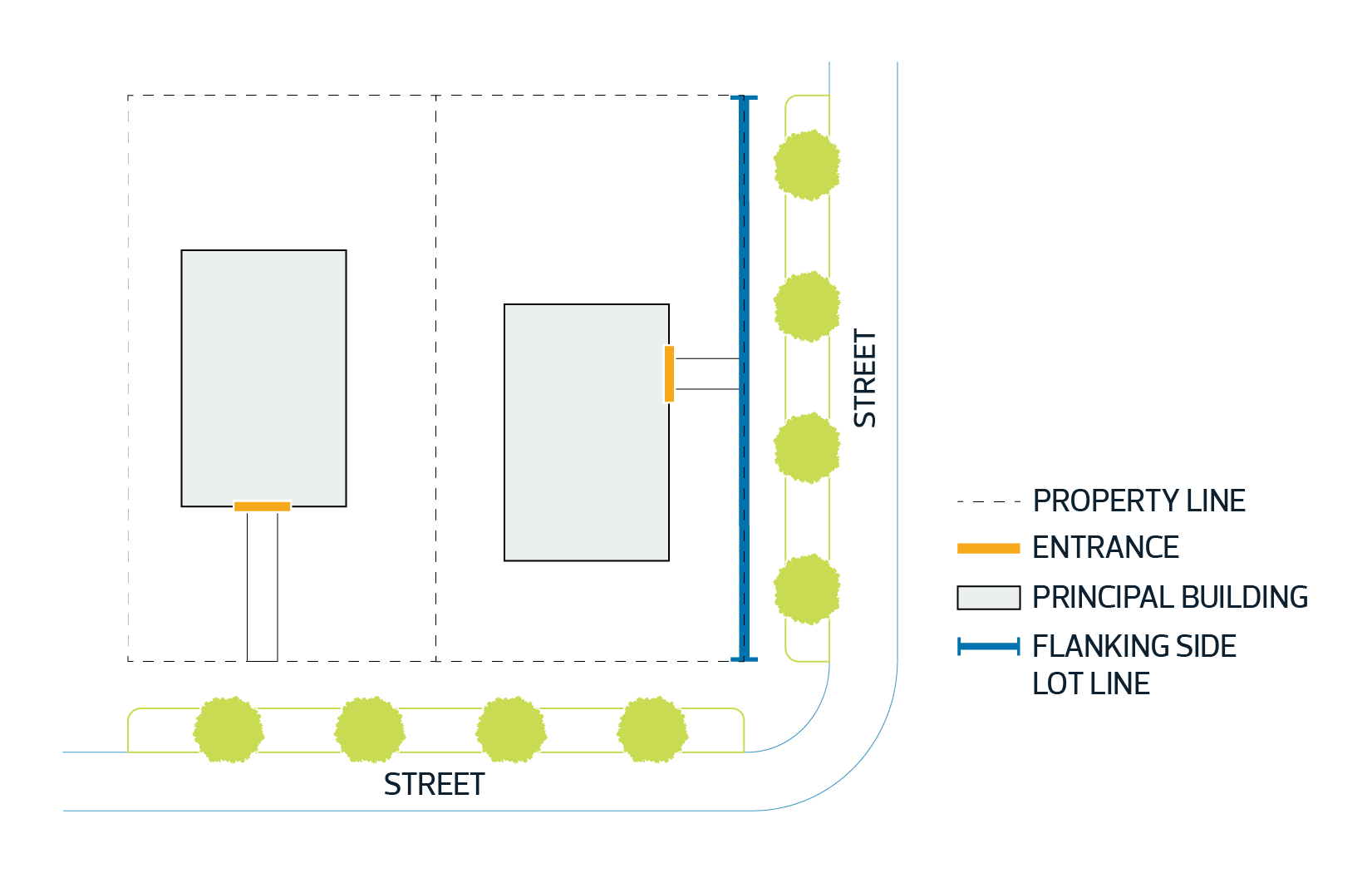
|
Flanking Side Setback means the distance that a development or a specified portion of a development must be from a Flanking Side Lot Line. A Flanking Side Setback is not a Flanking Side Yard.
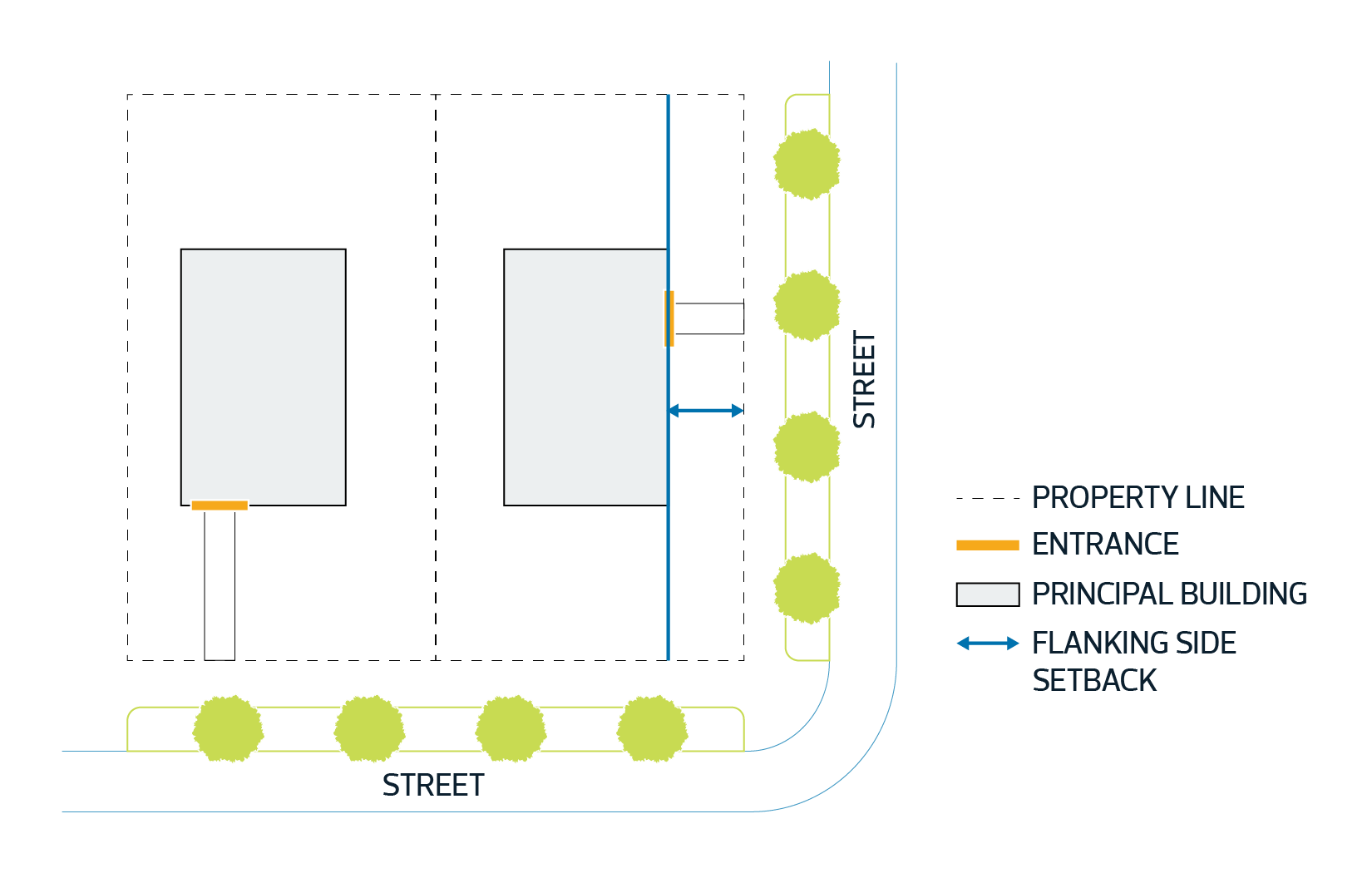
|
Flanking Side Yard means the portion of a Site Abutting the Flanking Side Lot Line, extending between the Front Yard and the Rear Yard and located between the Flanking Side Lot Line and the nearest wall of the principal building, not including projections.
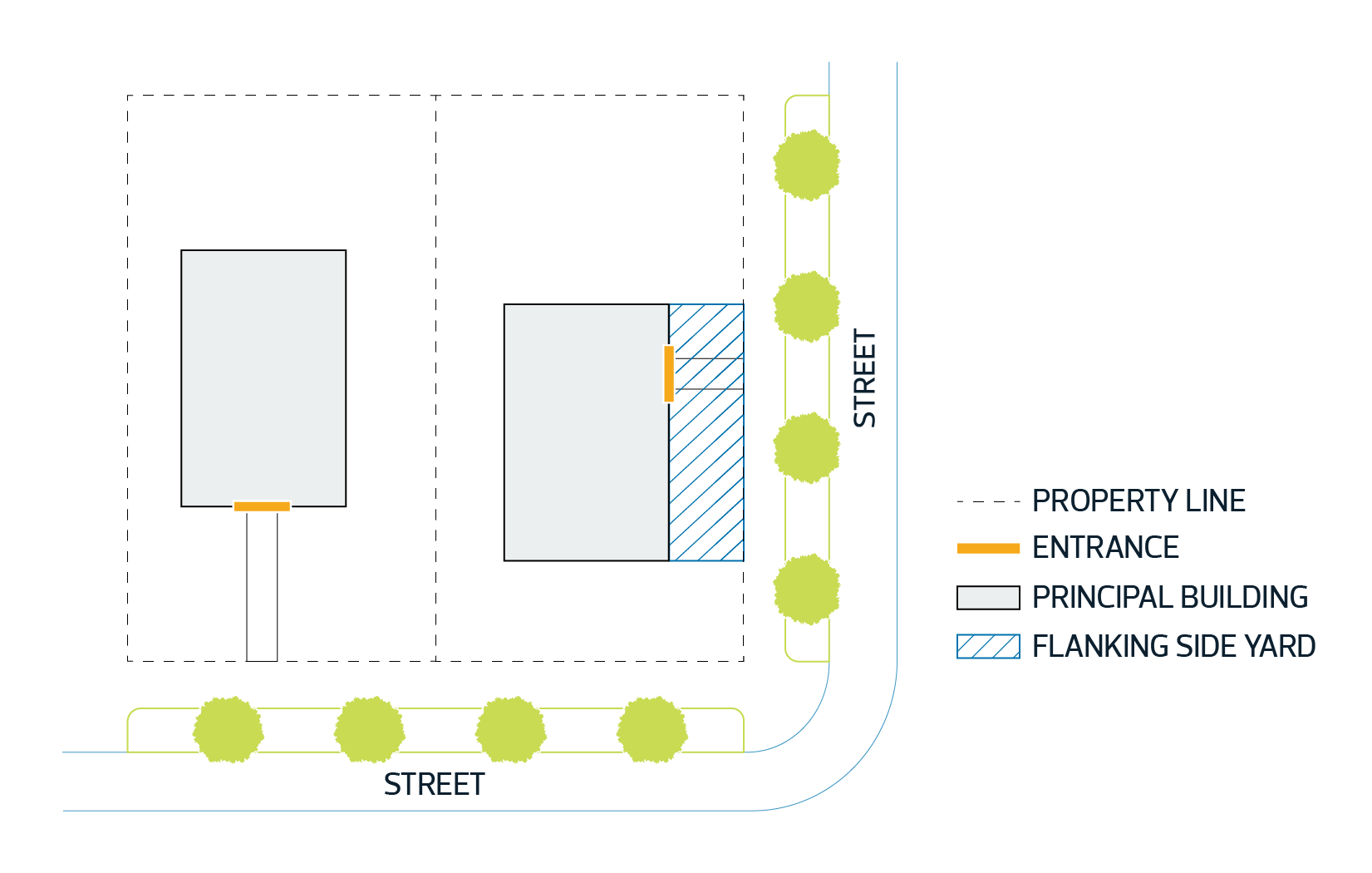
|
Flanking Street means a Street Abutting a Flanking Side Lot Line.
Floor Area means the area of a building or structure, contained within the outside surface of the exterior and Basement walls. Where a wall contains windows, the glazing line of windows may be used.
| Floor Area Ratio (FAR) means a building or structure’s Floor Area in relation to the total area of the Site that the building is located on, excluding: | |||||||||||
|
|||||||||||
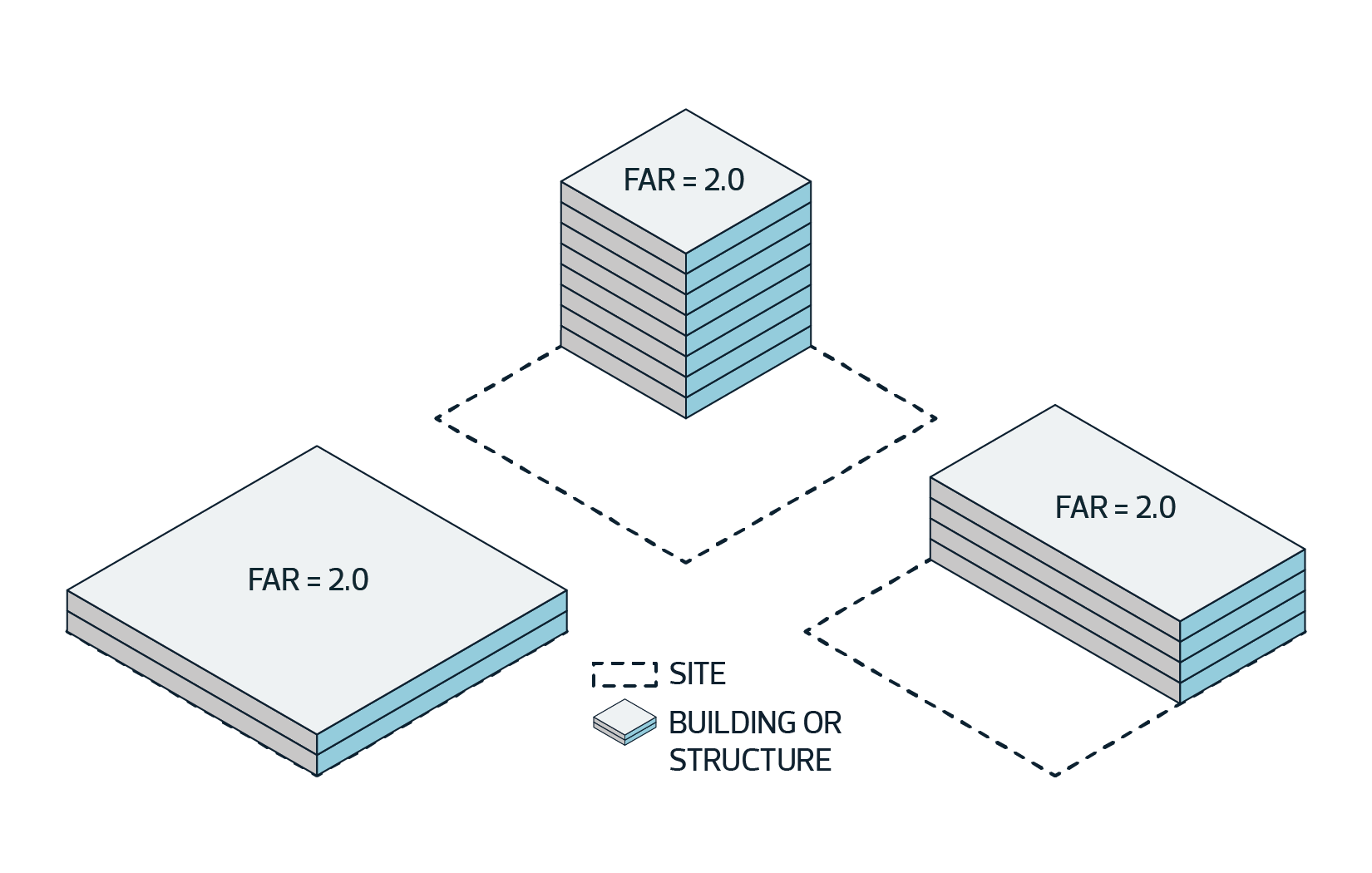
|
Where described as a Modifier in a regulation, this is represented as the letter “f” accompanied by a number on the Zoning Map.
Floor Plate means the Floor Area of a Storey.
| Front Lot Line means: | |||||||||
|
|||||||||
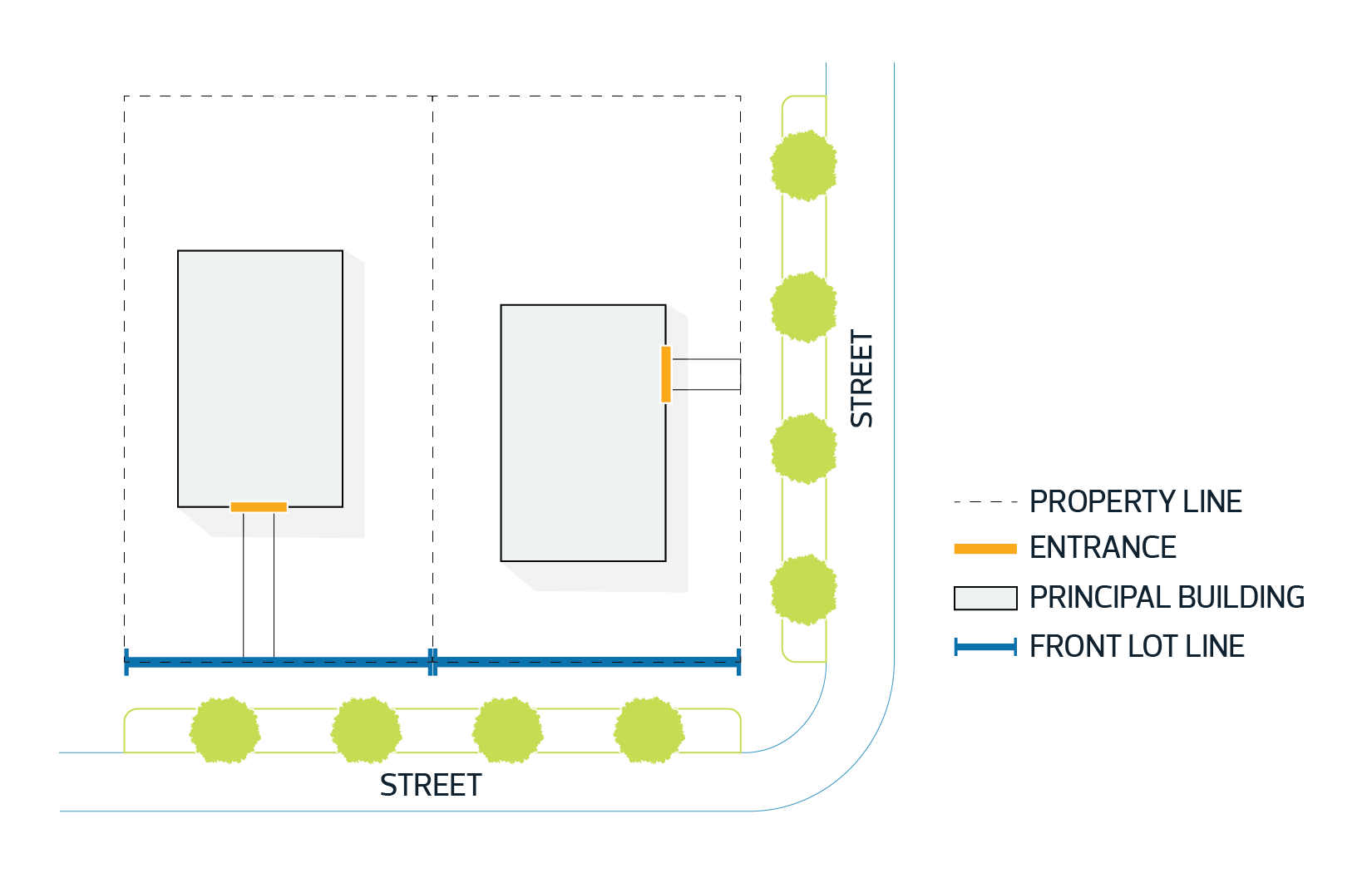
|
Front Setback means the distance that a development or a specified portion of a development, must be from a Front Lot Line. A Front Setback is not a Front Yard.
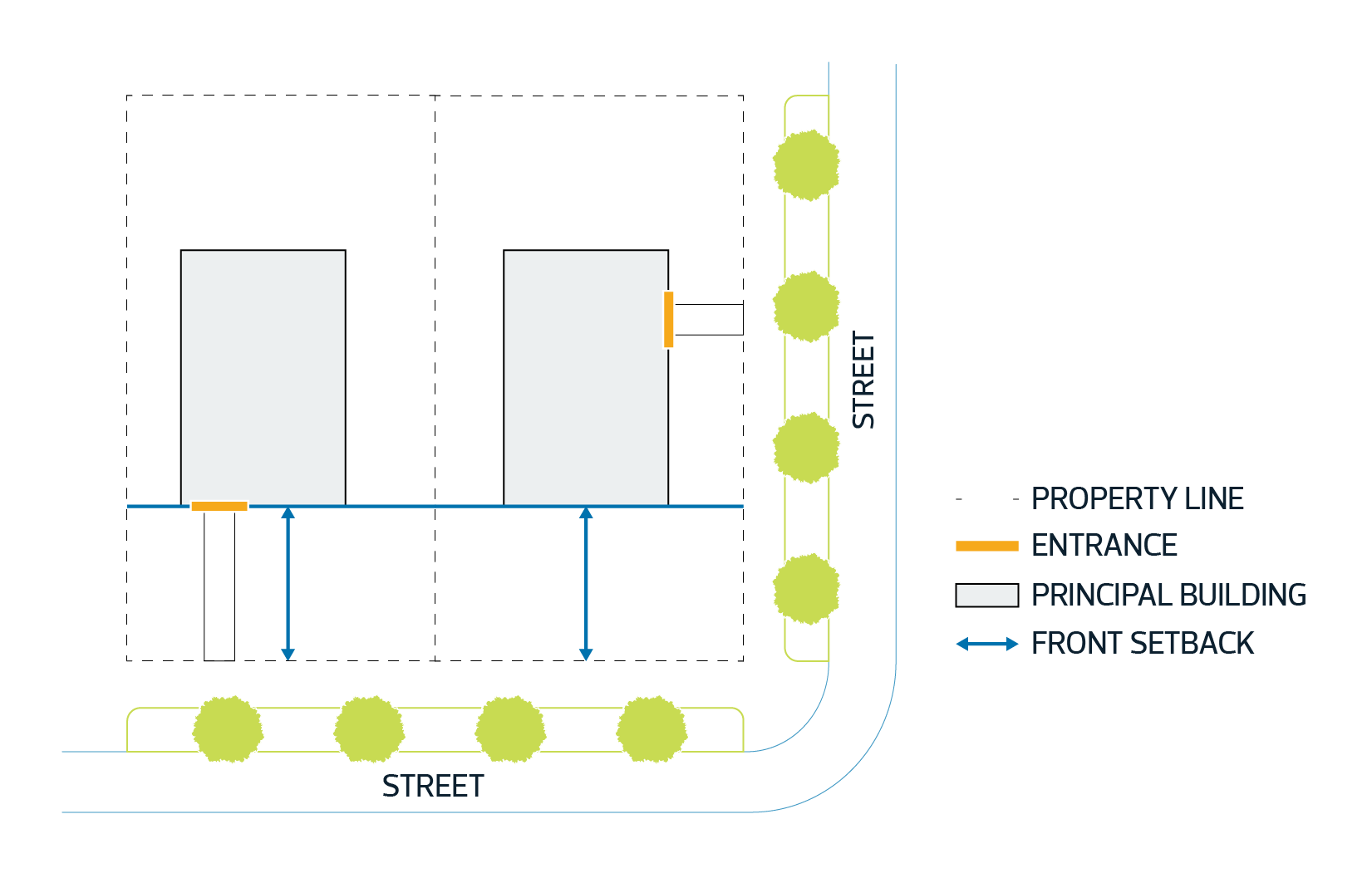
|
Front Yard means the portion of a Site Abutting the Front Lot Line extending across the full width of the Site, between the Front Lot Line and the nearest wall of the principal building, not including projections.
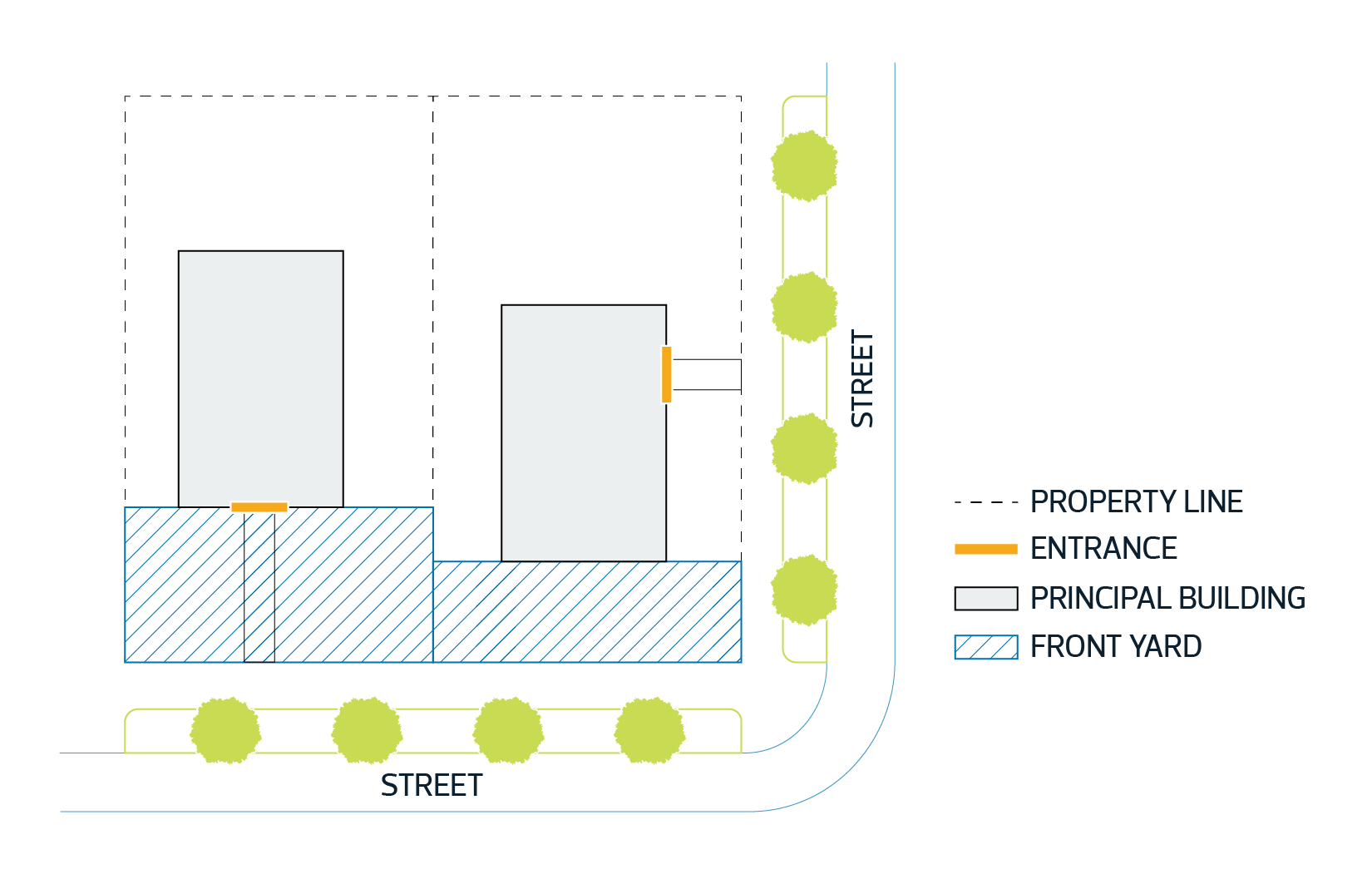
|
G
Garage means an Accessory building, or part of a principal building, designed and used primarily to store vehicles and includes carports. A Garage does not contain a Drive Aisle.
Grade means a geodetic elevation from which the Height of a building or structure is measured, calculated in compliance with Section 5.70.
Green Building means a building that strives to balance environmental, economic, and social considerations in design, construction and operation. Energy, water and resource efficiency; occupant comfort and well-being; Site development and community context; and the economics of building construction and operation are key considerations. In comparison to conventional buildings, Green Buildings take advantage of natural processes to generate less waste, less pollution, and reduce their overall environmental footprint.
Green Parking Lot means a Surface Parking Lot with limited Impermeable Material, substantial tree cover and plant material, and surface runoff directed toward Landscaped basins, thus encouraging on-Site stormwater management and eliminating or reducing the need for mechanical drainage connections.
Environmental performance targets include measures for reducing the urban heat island effect, improving pedestrian infrastructure, comfort and safety, using energy efficient fixtures and recycled materials, managing stormwater runoff on-Site, and preserving and enhancing the environment.
Green Roof means the installation of vegetated roofs and site/building systems that either reduce the amount of stormwater runoff and/or reuse stormwater on-Site or within buildings. Also known as Green Roof tops, vegetated roofs, planted roofs, rooftop gardens, or eco-roofs which utilize a variety of techniques for growing vegetation on a building rooftop.
“Extensive” Green Roofs are usually lightweight green roof retrofits on existing building roofs, and cannot usually accommodate foot traffic. “Intensive” Green Roofs usually involve a deeper soil layer, and are easier to incorporate into new building designs.
Grocery Store means an Indoor Sales and Service business that primarily sells a range of fresh or packaged food products in a retail store. Other household items may also be sold.
Ground Floor means the first Storey.
H
Hard Surfaced means ground that is covered with a durable, dust-free material constructed of permeable or Impermeable Material. Typical examples include concrete, asphalt, pavers, or similar material.
Height means a vertical distance between 2 points.
Where described as a Modifier in a regulation, this is represented as the letter “h” and a number on the Zoning Map.
Hen Enclosure means an Accessory building designed for hen keeping and may include a hen coop consisting of an enclosed covered shelter for hens, and/or a hen run consisting of an enclosed area used to protect hens and allow for free movement.
Historical Resources Act means the Historical Resources Act, R.S.A. 2000, c. H-9, as amended.
Home Based Child Care means a Home Based Business intended to provide temporary care and supervision for up to 6 non-resident children.
I
Identification Sign means a Sign that contains only the name and addresses of a building, Site, premises or occupants and the activity carried on in the building, Site or premises, but does not include any other advertising Copy.
Impermeable Material means materials that do not allow water to infiltrate into the ground.
Typical examples include building coverage, asphalt, concrete, and other paving materials installed in a manner that prevents infiltration. This does not include materials such as gravel, river rock, wood chips, bark mulch, permeable pavers, permeable concrete, permeable asphalt, soil pavement, and wood decking with spaced boards.
Inclusive Bike Parking means a horizontal Bike Parking Space that accommodates non-standard bikes, or spaces for bikes that are difficult to lift.
Typical examples of non-standard bikes include cargo bikes, fat tire bikes, e-bikes, handcycles, or bikes with trailers.
Interior Side Lot Line means the Lot line other than a Front Lot Line, Flanking Side Lot Line or Rear Lot Line.
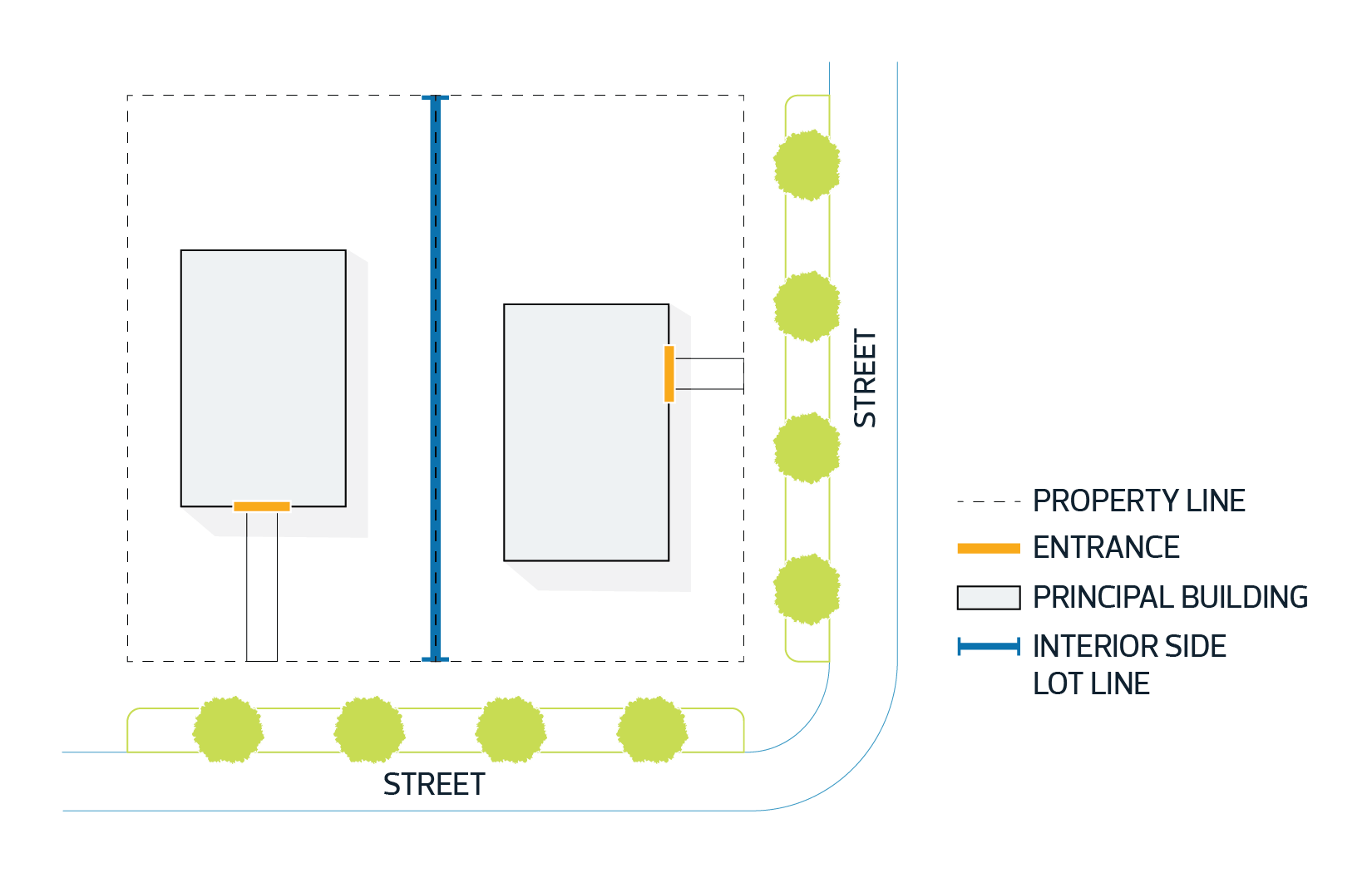
|
Interior Side Setback means the distance that a development or a specified portion of a development must be from an Interior Side Lot Line. An Interior Side Setback is not an Interior Side Yard.
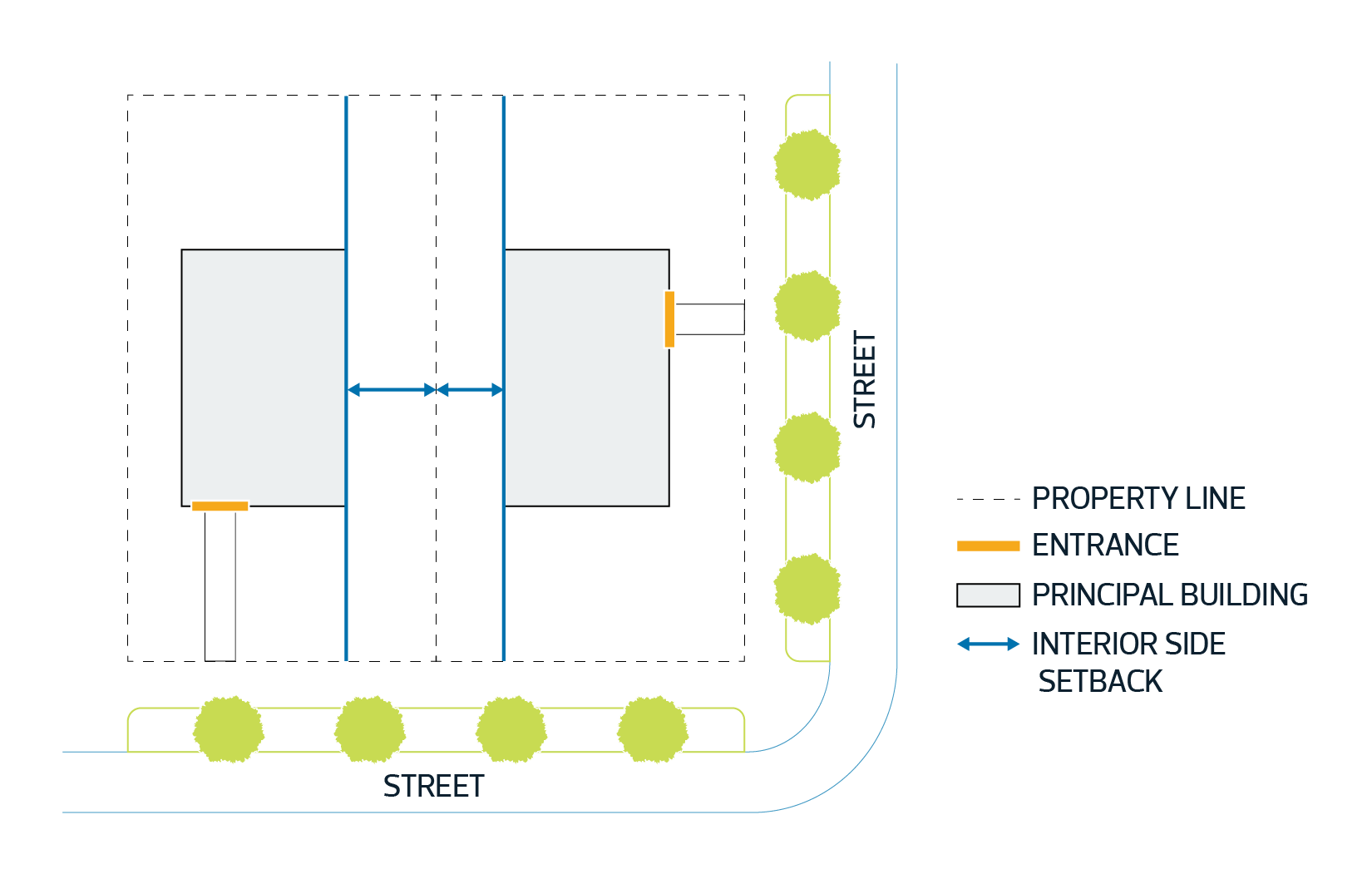
|
Interior Side Yard means the portion of a Site Abutting an Interior Side Lot Line, extending between the Front Yard and the Rear Yard, and located between the Interior Side Lot Line and the nearest wall of the principal building, not including projections.
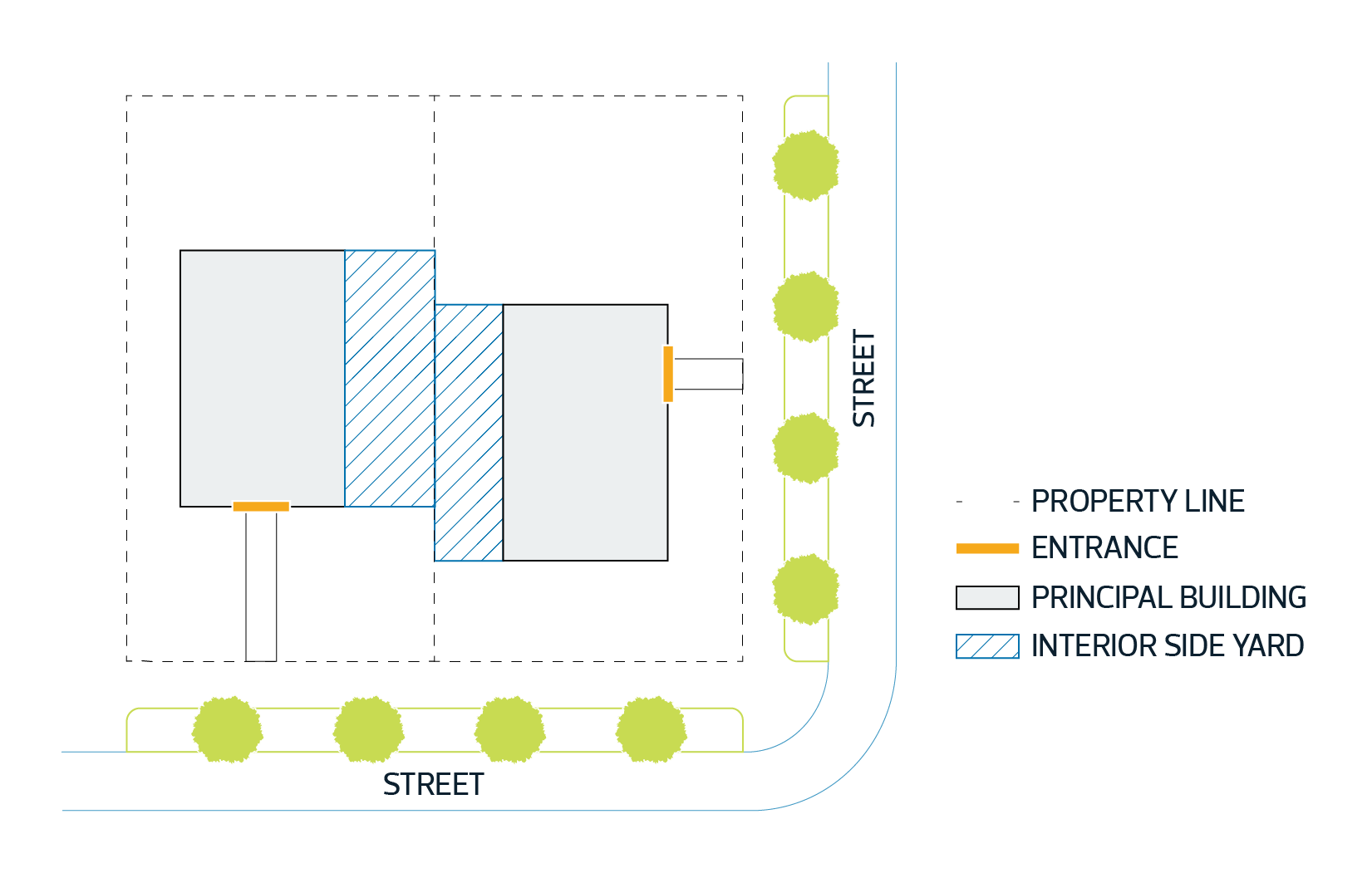
|
L
Landscape Buffer means a Landscaped area where additional planting is required to provide screening or minimize building massing, privacy impacts, or a Nuisance.
| Landscaping means the preservation or modification of the natural features of a Site through the placement or addition of any or a combination of the following: | |||||||
|
|||||||
| Landscaping does not include decorative Hard Surfacing used for, or contained within, Parking Areas, Driveways, or vehicle access areas. | |||||||
Local Road means a Street that provides direct access to adjacent Sites and serves neighbourhood travel. Local Roads include service roads.
Lodging House means a building, or part of a building, containing 4 or more Sleeping Units and each Sleeping Unit is rented individually. A Lodging House does not provide on-Site or off-Site social, physical, or mental health supports.
Logo means a readily identifiable symbolic representation used exclusively by an individual company or person to simplify product or business recognition which contains no additional advertising message.
Long Term Bike Parking means a weather-protected, secure location for bicycles where access to the enclosure is limited to authorized individuals only. Typical examples include a room within a residential building or workplace, an enclosure within a Parkade or a cluster of bike lockers or cages.
| Lot means: | |||||||||||
|
|||||||||||
Lot Width means the horizontal distance between the side Lot lines measured 9.0 m from the Front Lot Line.
M
Main Street Development means human scale and people-focused development that creates an active streetfront and comfortable public realm through:
- building or Podium placement close to the Street;
- orienting buildings and main entrances towards the Street;
- high quality building design that provides visual interest, weather protection, and articulation to minimize the perception of massing;
- transparent windows along the Ground Floor to support pedestrian interaction and visible storefront displays; and
- locating vehicle parking underground or to the rear or side of buildings.
Mass Transit Station means an existing transit facility, or a future transit facility with a Council-approved concept plan, that includes an LRT stop or station or an area where multiple buses are able to stop simultaneously to allow transfers between other transit routes. A Mass Transit Station may be located on private or public property.
Typical examples include LRT stops and stations, transit centres or other major stops served by mass transit routes.
Message Duration means the period of time Digital Copy is fixed or displayed on a Sign face. Message Duration is measured in seconds and rounded to the nearest second.
Modifier means a label on the Zoning Map that indicates the application of particular development regulations.
Typical examples include Height Modifier, Floor Area Ratio Modifier, and Commercial Frontage Modifier.
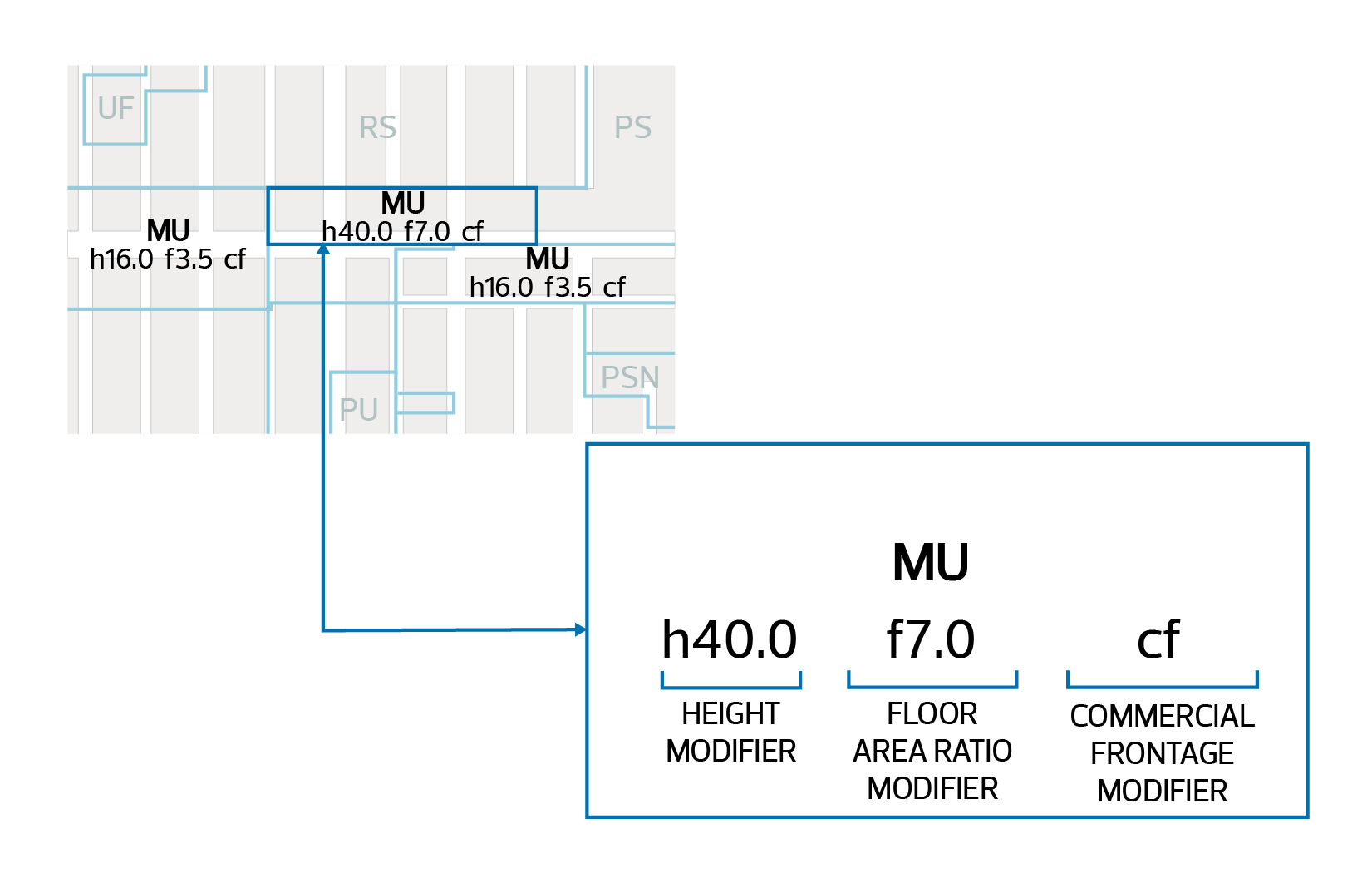
|
| Multi-unit Housing means a building that contains: | |||||
|
|||||
| Typical examples include stacked row housing, apartments, and housing in a mixed-use building. | |||||
Municipal Government Act means the Municipal Government Act, R.S.A. 2000, c.M-26, as amended.
Mural means a piece of artwork located on a wall, including a painting, fresco, frieze, photograph, picture, image, illustration, or graphic presentation that does not contain advertising in any form. It does not contain Digital Copy.
Mural Sign means a Wall Sign that is a piece of artwork, including a painting, fresco, frieze, photograph, picture, image, illustration, or graphic presentation that includes advertising. It does not contain Digital Copy.
N
Natural Area Management Plan means a document that ensures all responsibilities and actions necessary to support the conservation, preservation or restoration of a protected natural area.
| Nuisance means the external impact caused by an activity that is reasonably likely to interfere with the use and enjoyment of an individual's property, due to: | |||||||||
|
|||||||||
| Typical examples include emission of noise, smoke, dust, vapour, odour, heat, light, fumes, or unsightly or unsafe conditions, or use of toxic or hazardous materials. | |||||||||
O
Off-premises Advertising means Copy that relates to a business, activity or organization that does not have a Development Permit to operate on the Site where the Sign is located. Signs with Off-premises Advertising may generally be used for short term advertising.
On-premises Advertising means Copy that relates only to a business, activity or organization that has a Development Permit to operate on the Site where the Sign is located.
Overlay means additional development regulations superimposed on specific areas of the Zoning Map that supersede or add to the development regulations of the underlying Zone.
P
Parkade means a structure that includes 1 or more Parking Areas and 1 or more Drive Aisles and which may be composed of multiple levels above or below ground. It does not include a Surface Parking Lot.
Parking Area means an area that is used for vehicle parking. A Parking Area has 1 or more parking spaces and includes a parking pad, but does not include Street parking, a vehicle access, a Driveway, or a Drive Aisle.
Pathway means a Hard Surfaced path of travel that is located on private property that cannot be used for motor vehicles.
Permitted Development means a development that meets the criteria in Subsection 3.2 of Section 7.110 of this Bylaw.
Permitted Uses means those Uses of land, buildings or structures for which Development Permits must be issued by the Development Planner, if the development meets all applicable regulations.
Platform Structure means a structure intended for use as an outdoor Amenity Area that may project or be recessed from the wall of a building. It may include guardrails, parapet walls, pergolas, or similar features.
Typical examples include: balconies, decks, porches, raised patios and verandas. This definition does not include a Rooftop Terrace.
Post-secondary Learning Act means the Post-secondary Learning Act, SA 2003, c.P-19.5, as amended.
Privacy Screen means a structure located on a Platform Structure or Rooftop Terrace that provides a visual barrier by obscuring sightlines from Abutting Sites, Streets or Alleys.
Typical examples include lattices, trellises, parapet walls, wooden boards, translucent glass, or any combination of these or similar features. Railing and balustrade systems are not considered Privacy Screens. A Privacy Screen is not a Fence.
Private Outdoor Amenity Area means an Amenity Area that provides outdoor open space designed for the active or passive recreation and enjoyment of the residents of a particular Dwelling, and which Abuts and is directly accessible from that Dwelling. This definition includes private balconies.
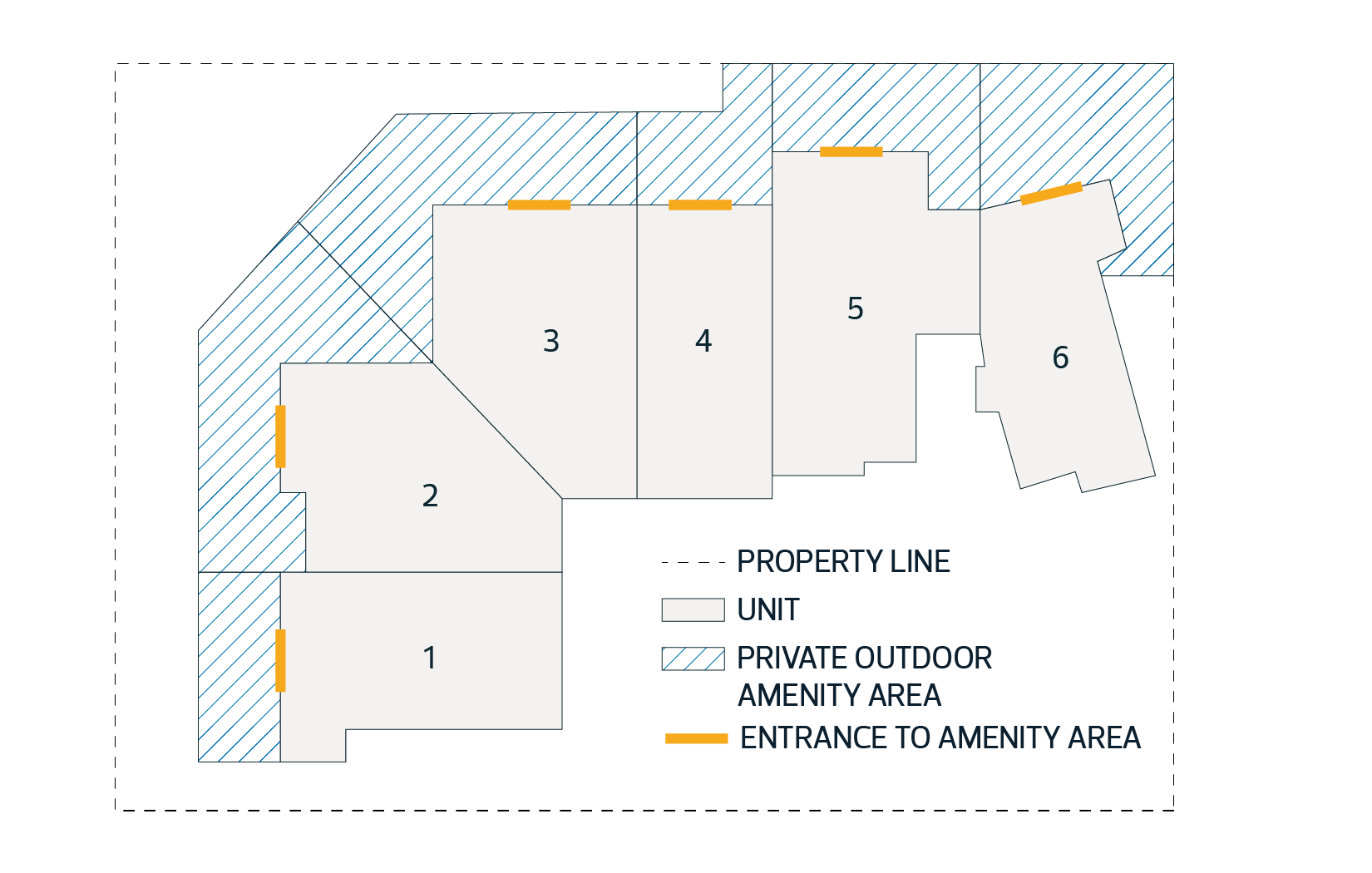
|
Public Amenity Area means an Amenity Area including open spaces, parks, plazas, locations of art, seating areas, and other amenities at ground level that are complementary to the adjacent streetscape and are visually and physically accessible to the public.
Public Park and Ride Facility means a Surface Parking Lot or Parkade owned by the City of Edmonton that is intended to serve a Mass Transit Station, where drivers leave their vehicles in order to take public transit.
Public Space means space that is part of an establishment and which is open to the public and not restricted to only employees. Public Space includes any private non-sale hospitality area where products manufactured within the premises are provided to private groups for tasting and sampling. This definition does not include kitchens, administration offices, bathrooms, or food or drink preparation areas.
R
Railway (Alberta) Act means the Railway (Alberta) Act, R.S.A. 2000, c. R-4, as amended.
| Rear Lot Line means: | |||||
|
|||||
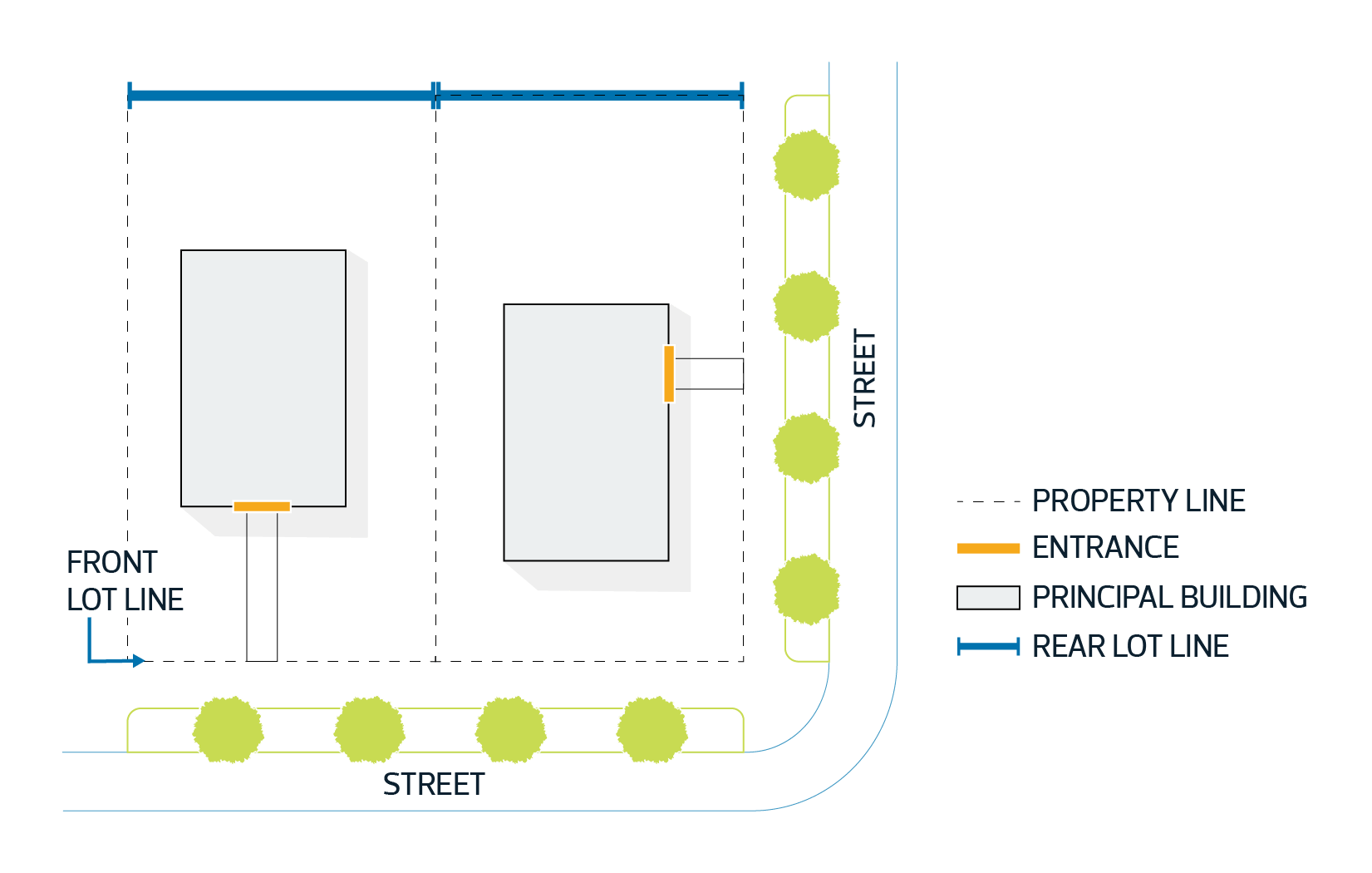
|
Rear Setback means the distance that a development, or a specified portion of a development, must be from a Rear Lot Line. A Rear Setback is not a Rear Yard.
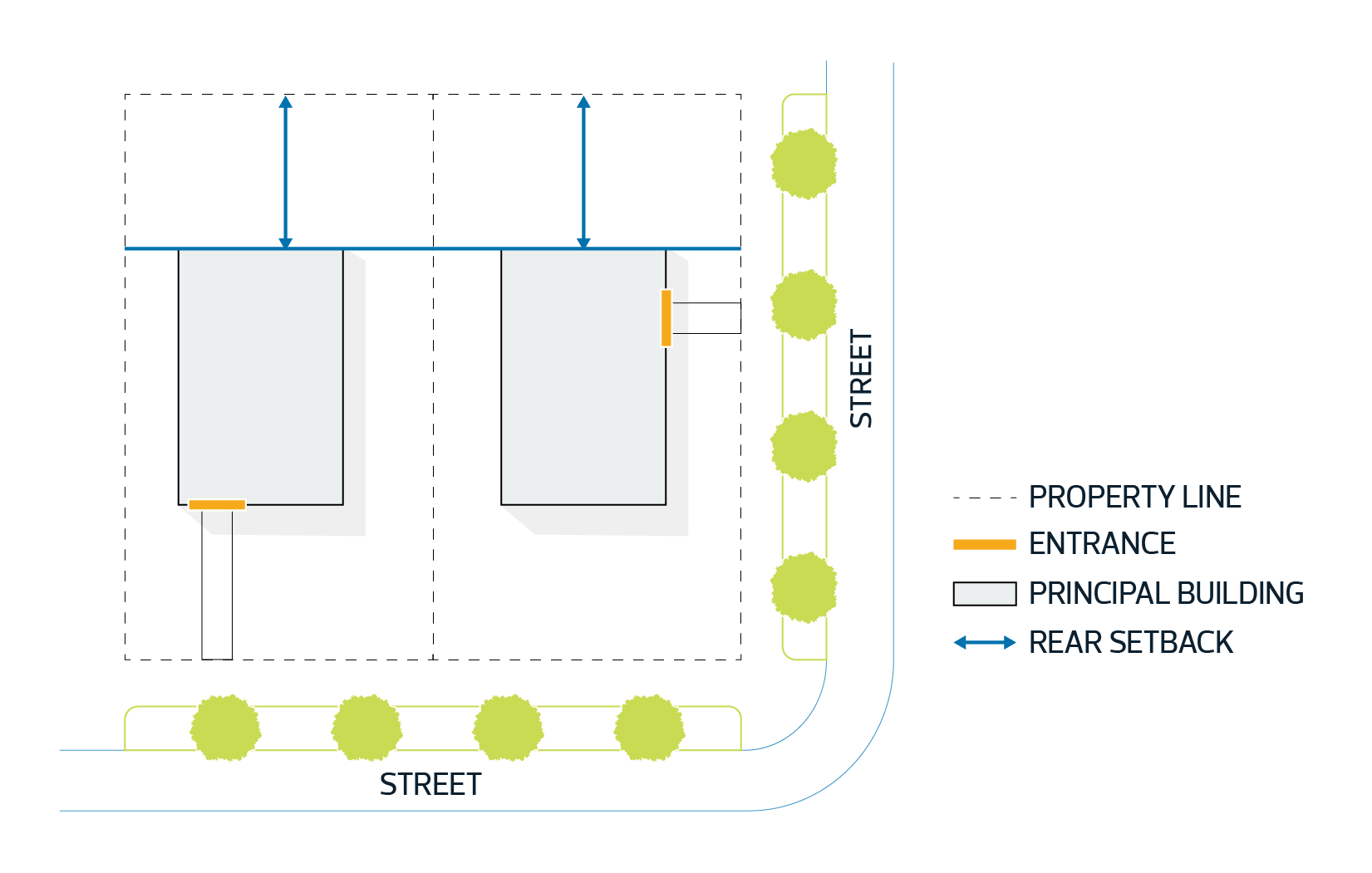
|
Rear Yard means the portion of a Site Abutting the Rear Lot Line, extending across the full width of the Site, and located between the Rear Lot Line and the nearest wall of the principal building, not including projections or Backyard Housing.
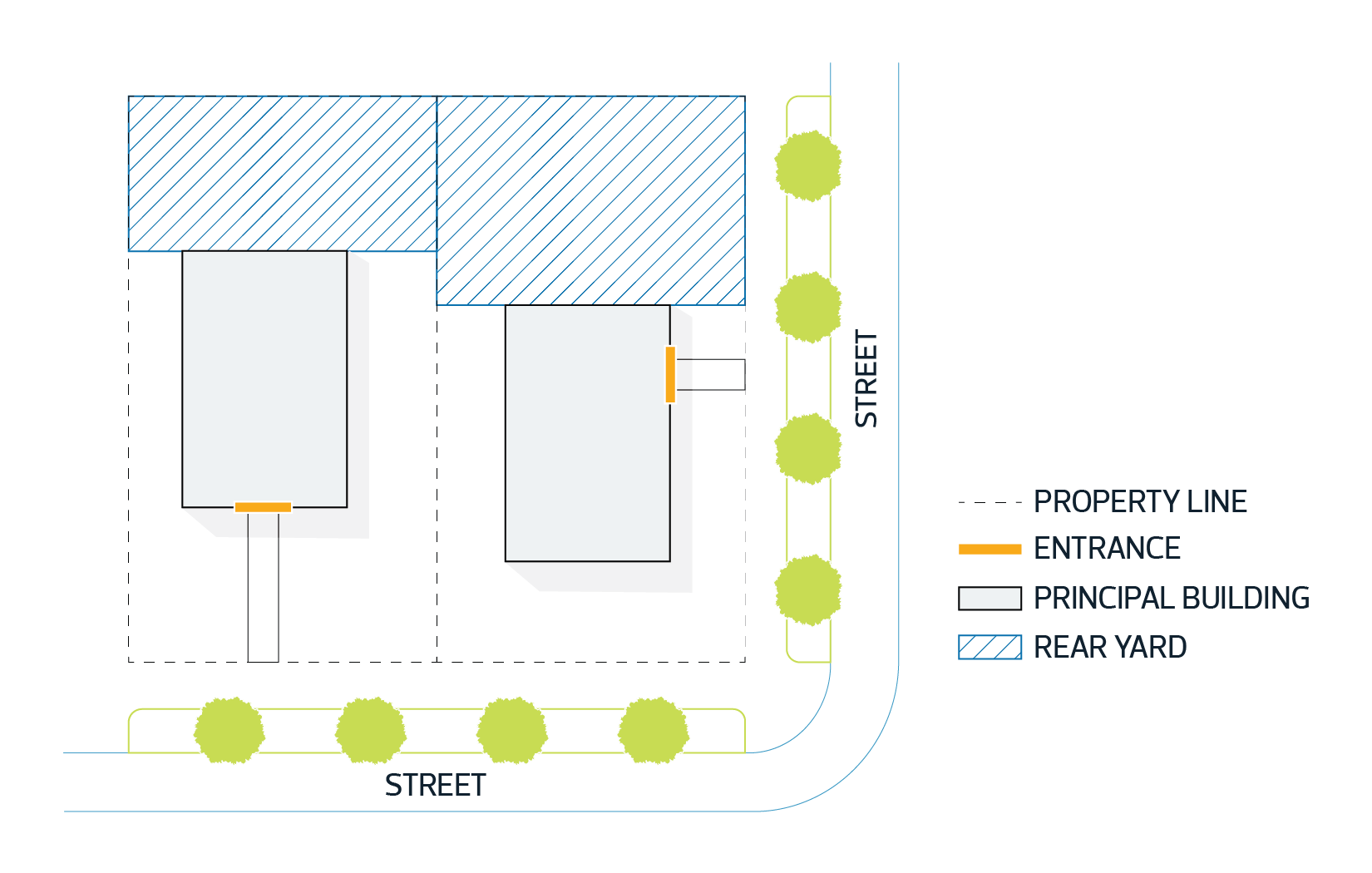
|
Recreational Vehicle means a motorized or non-motorized vehicle or structure designed for recreation and travel purposes, and is not a Dwelling. Typical examples include motor homes, travel trailers, fifth wheels, truck campers, tent trailers, park model trailers, camper van conversions, small utility trailers, boats, snowmobiles, all-terrain vehicles, jet skis, or motorcycles and trailers to carry them.
Reduced Setback Development means a housing arrangement of Single Detached Housing, Semi-detached Housing, or Row Housing that is developed on a Site where 1 Interior Side Setback is reduced up to a minimum of 0.6 m. This does not include Cluster Housing. A Reduced Setback Development must not also be a Zero Lot Line Development. This housing arrangement may only be used where regulations specific to it are contained in the applicable Zone.
Religious Assembly means a Community Service development used for worship and related religious activities. Typical activities include chapels, churches, convents, gurdwara, monasteries, mosques, parish halls, synagogues, and temples.
| Renewable Energy Device means a device where energy is derived from sources that are not depleted by using them, these include: | |||||||||||
|
|||||||||||
Reserve Creation means the act of adding land to an existing Reserve or creating a new Reserve for a First Nation by Order in Council or Ministerial Order.
Retaining Wall means a structure constructed to support and resist lateral pressure in order to retain earth, rocks, water or similar materials.
Reverse Housing means a housing arrangement of Single Detached Housing, Semi-detached Housing, Duplex Housing or Row Housing that is developed on a Site that fronts onto an open space and does not front onto a Street or Alley. Vehicle access is provided from an Alley.

|
Rezoning Amendment means the process of changing a property’s Zone by amending the Zoning Map to modify development rights, subject to the approval of Council.
Rooftop Terrace means a structure located on a roof of a building that is intended for use as an outdoor Amenity Area that may be surrounded by guardrails, parapet walls or similar features and, in the case of a Dwelling, is located above the uppermost habitable room.
A Rooftop Terrace does not include a Platform Structure.
Row Housing means a building that contains 3 or more principal Dwellings joined in whole or in part at the side, the rear, or the side and the rear, with none of the principal Dwellings being placed over another. Each principal Dwelling has separate, individual, and direct access to ground level.
S
Safety Codes Act means the Safety Codes Act, R.S.A. 2000, c. S-1, as amended.
Seasonal or Holiday Decorations means temporary ornaments and displays installed in conjunction with seasonal, religious, cultural or other holiday activities where such ornaments and displays contain no local or general advertising of specific commercial services, merchandise or entertainment.
Seasonal Shelter means a Community Service activity where the primary purpose is to provide accommodations not continuously throughout the year for people requiring shelter for a temporary duration. This may also include health, cultural, or recreational programming, individual support services, meal service, and administrative offices, where such services support the primary purpose of the Seasonal Shelter.
Secondary Suite means a Dwelling that is subordinate to, and located within, a building in the form of Single Detached Housing, Semi-detached Housing, Row Housing, or Backyard Housing. A Secondary Suite is not a principal Dwelling. A Secondary Suite has a separate entrance from the principal Dwelling, either from a common indoor landing or directly from outside the building. A Secondary Suite has less Floor Area than the principal Dwelling. A Secondary Suite is not separated from the principal Dwelling by a condominium conversion or subdivision.
Semi-detached Housing means a building that contains 2 principal Dwellings that share, in whole or in part, a common vertical party wall. Each Dwelling has individual, separate and direct access to ground level. This does not include Duplex Housing.
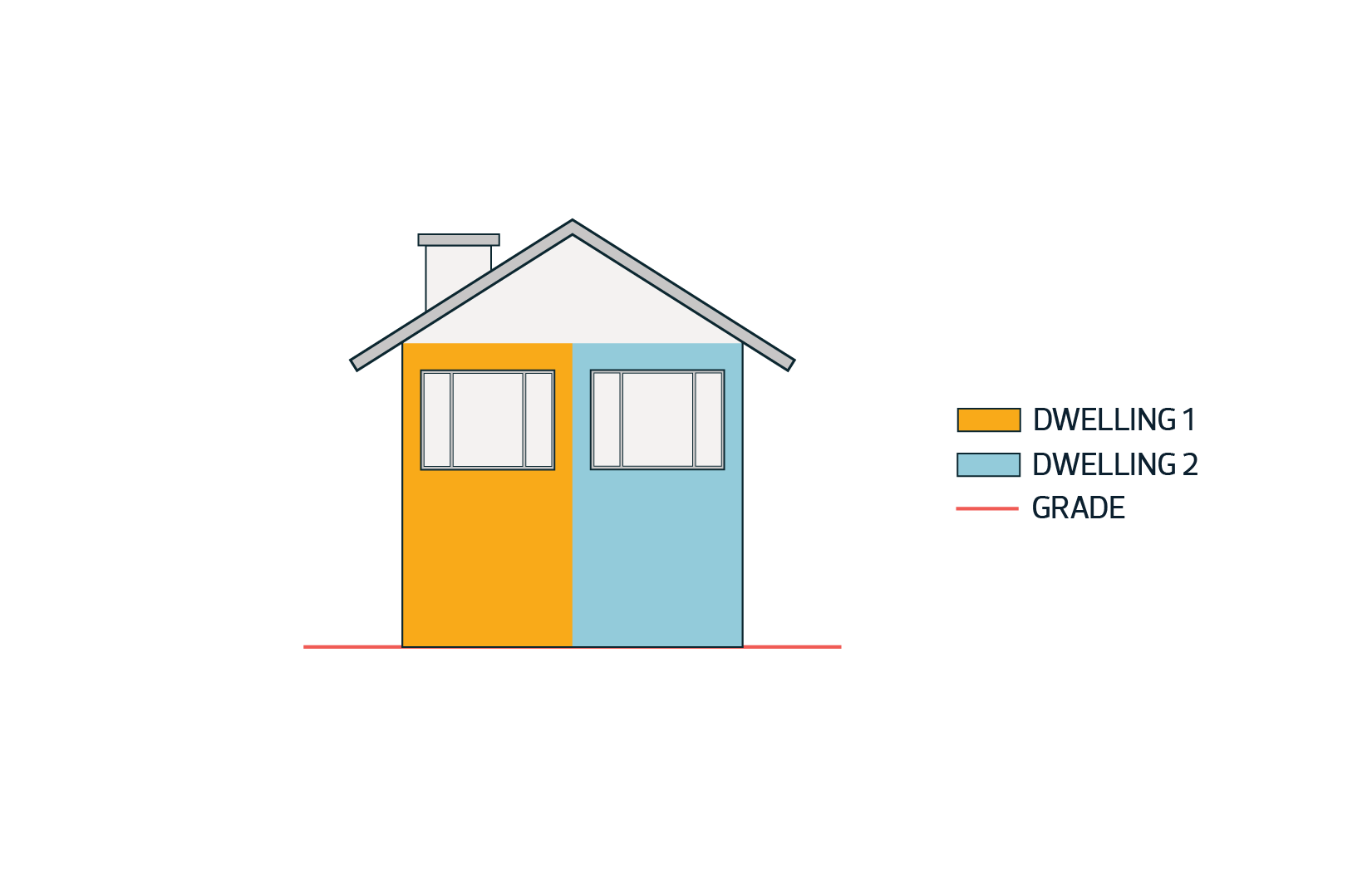
|
Sensitive Use means, for the purposes of determining when a risk assessment is required, an activity or development where the acceptable annual risk threshold of human fatality is below 0.3 in a million. This typically includes emergency response services, critical infrastructure, large gatherings of people, and places where populations require assistance with evacuations.
Short Term Bike Parking means a convenient and publicly-accessible parking location for bicycles that can be easily located from the main entrance of the building it serves. Typical examples include bicycle racks or bicycle corrals.
Sign means any visual medium, including its structure and other component parts, illuminated or not illuminated, that is used to identify or provide information, or to advertise a product, service, place, activity, person, institution, or business. A Sign does not include Flags, interior window displays of merchandise, or Signs painted on or attached to a motor vehicle located on a Street or Alley.
Typical examples include: Freestanding Signs, Fascia Signs, Portable Signs, Projecting Signs, Banner Signs, placards, Murals, Mural Signs, and those attached to or painted on a vehicle or trailer that is parked on a property and being used for advertising purposes.
Sign Structure means any structure that supports a Sign, including materials used to conceal or improve the visual appearance of the structural parts.
Single Detached Housing means a building that contains 1 principal Dwelling and has direct access to ground level.
| Site Coverage means the total horizontal area on a Site: | |||||
|
|||||
| This definition includes cantilevers, but does not include steps, eaves, cornices, or other similar projections. | |||||
Site Depth means the distance between the mid-points of the Front Lot Line and the mid-points of the Rear Lot Line.
Site Width means the horizontal distance between the side boundaries of the Site measured 9.0 m from the Front Lot Line.
Sleeping Unit means a room in a residential building that is used for people to live, that is available through an accommodation agreement and is not self-contained. Sleeping Units have shared access to facilities such as cooking, dining, laundry, sanitary, or general living facilities in the same residential building. A Sleeping Unit provides accommodation for a maximum of 2 people.
Soft Landscaping means Landscape materials that allow water infiltration and absorption into the ground to reduce stormwater runoff and to be capable of supporting living plants, such as trees, shrubs, flowers, grass, or other perennial ground cover. This does not include materials that prevent water infiltration or materials such as artificial turf, decking, bricks, and pavers.
Statutory Plan means for the purpose of this Bylaw only, any plan defined as a Statutory Plan by the Municipal Government Act, or any planning policy document approved by Council by resolution having specific impact on a defined geographic area such as a district or neighbourhood.
Storey means that portion of a building that is between the top of any floor and the top of the floor above it.
If there is no floor above, the Storey is the portion of the building that is between the top of any floor and the ceiling above it.
If the top of the floor directly above a Basement is greater than 1.83 m above Grade, the Basement is considered a Storey.

Street Wall means a series of continuous building Facades that are typically parallel to a Street or Alley.
Supportive Housing means a building, or part of a building, containing 1 or more Sleeping Units or Dwellings that provide accommodations and on-Site or off-Site social, physical, or mental health supports to ensure an individual’s daily needs are met.
Surface Parking Lot means an unenclosed area wholly at ground level that includes 1 or more Parking Areas and 1 or more Drive Aisles.
T
Text Amendment means an amendment to Part 2, Part 3, Part 5, Part 6, Part 7 or Part 8 of this Bylaw, subject to the approval of Council.
Temporary Sign means any Sign that is relocatable or removeable from a Site and that is located on a Site for a limited duration.
Traffic Safety Act means the Traffic Safety Act, R.S.A. 2000, c.T-6, as amended.
Treed Boulevard means the portion of a Street Abutting a Lot or sidewalk that has been landscaped with trees planted at intervals. The Treed Boulevard may either be existing, or approved but not yet installed.
U
Use means the purposes or activities for which a piece of land or its buildings are designed, arranged, developed or intended, or for which it is occupied or maintained.
V
Violation Notice means the document issued by the City of Edmonton to a person who has committed an offence under Section 7.200 of this Bylaw.
W
Wall Sign means a Sign that is located on a building wall for the purpose of being viewed from the outside. Wall Signs do not project further than 0.4 m from the building wall, or extend beyond the eaveline or roofline, or beyond the horizontal limits of the wall.
Warning Sign means a Sign providing a warning to the public, including such Signs as "no trespassing" or "private driveway" Signs.
Water Retention Structure means a structure designed to retain a large volume of water, a minimum of 0.378 cubic metres.
Typical examples include swimming pools, skating rinks, ornamental ponds, hot tubs, whirlpools, and spas.
Window Sign means a Sign that is painted on, attached to, displayed on, or displayed behind the inside or outside of a window, so that it is intended to be viewed from outside the premises. Window Signs do not include merchandise on display.
Y
Year-round Shelter means a Community Service activity where the primary purpose is to provide ongoing accommodations for people requiring shelter for a temporary duration. This may also include health, cultural, or recreational programming, individual support services, meal service, and administrative offices, where such services support the primary purpose of the Year-round Shelter.
Z
Zero Lot Line Development means a housing arrangement of Single Detached Housing, Semi-detached Housing, or Row Housing that is developed on a Site where 1 Interior Side Setback is reduced to 0 m. This does not include Cluster Housing. A Zero Lot Line Development must not also be a Reduced Setback Development. This housing arrangement may only be used where regulations specific to it are contained in the applicable Zone.
Zoning Bylaw means a land use bylaw, as that term is used in the Municipal Government Act.
Zoning Map means the map identified in Section 1.20 of this Bylaw that specifies the Zones and Overlays that apply to specific lands within the city of Edmonton.

